Issue 9; 2023 All Markets

T.I. kicks off 2023 With Improved Productivity & Enhanced Processing Capabilities


Titanium Industries closed out our 50th anniversary year in 2022 with much success, and 2023 will be even more exciting with new equipment additions in several U.S. facilities. As always, T.I.’s aim for these improvements and investments is to ensure increased productivity and logistic success, which translates to added value for our customers.
Titanium Industries is always a step ahead of the competition when it comes to being able to fulfill our customers’ current and anticipated needs.


T.I.’s improvements will ensure increased productivity and logistic success as we continue to strive to stay up to date with the latest metal cutting customization machinery. We will continue to be the go-to, one stop metal supply solution choice while maintaining and updating our facilities to keep up with all our client's needs.
The new plate saw that arrived in Titanium Industries’ Plymouth, Michigan facility is ready to service all Midwest and central US customers.

water jet machine installed in our headquarters in Rockaway, NJ will enhance our cutting capability and capacity.

The expansion of our rack storage system in Jacksonville, Florida has been completed. This enhancement dramatically increases the overall rack capacity in Jacksonville allowing for increased utilization of the space.

It also supports future growth and further expansion of product breadth, not just for the Jacksonville region, but also for the entire T.I. global distribution network.








T i t a n i u m I n d u s t r i e s S t r e n g t h e n s F a c i l i t i e s w i t h I n v e s t m e n t s
RACK EXPANSION JACKSONVILLE, FL
NEW PLATE SAW PLYMOUTH, MI
S P E C I A L T Y M E T A L S S U P P L Y S O L U T I O N S A E R O S P A C E | D E F E N S E | M E D I C A L | I N D U S T R I A L | O I L A N D G A S T I T A N I U M . C O M | S A L E S @ T I T A N I U M . C O M
NEW WATER JET MACHINE ROCKAWAY, NJ



TITANIUM TODAY 3 Editorial Published by: International Titanium Association www.titanium.org 1-303-404-2221 Telephone ita@titanium.org Email Editor & Executive Director: Jennifer Simpson EDITORIAL OFFICES International Titanium Association PO Box 1300 Eastlake, Colorado 80614-1300 USA DISTRIBUTION LIST Join this free distribution by emailing us at ita@titanium.org www.titanium.org All Markets EDITION CONTENTS Meet the ITA 4 Editorial: Charles Edwards Analysts Provide Outlook On Growth of Titanium, Aerospace Markets, By Peter Zimm 8 Conard Stitzlein Traces Journey from Ohio Farm To a Pioneering Leader in the Titanium Industry, By Michael Gabriele 16 TriTech Titanium Focuses on MIM To Design, Produce Net-Shape Parts, By Patricia Radice 22 EB Systems Offers Insights on Benefits, Challenges of Electron Beam, Laser Beam Titanium Welding, By Cory Yaeger 28 IperionX Unveils Mission to Develop First 100-Percent U S Titanium Recycling Plant, By Michael C. Gabriele 36 New Orders for Wide-Body Boeing 787s, Airbus A350s Signal Encouraging Prospects for Aerospace Business, By Michael C. Gabriele . . . . . . . . . . . . . . . . . . . . . . . . . . . . . . . . . . . . . . . . . 44 India Gains Momentum as Emerging Force In Global Aerospace, Titanium Industries, By Michael C. Gabriele . . . . . . . . . . . . . . . . . . . . . . . . 50 From the Wire 56 Remembering Lanny Martin 61 ITA Member Roster 2023 . . . . . . . . . . . . . . . . . . . . . . . . . . . . . . . . . . . . . . . 62 Advertiser Index 64
MEET THE ITA
Board of Directors
Executive Committee
Dr. Markus Holz Professor, ITA Academic Member Education Committee Co-Chair
Titanium Europe Conference Chair
ITA President 2022-2024
Dr. Markus Holz is currently Professor at University of Applied Sciences Anhalt starting from 2020. There he is the program director of Logistics Management, teaching Operations Management and is currently involved in several national and international research programs in the field of sustainability and digitization in the industry.
Dr. Holz graduated in Aerospace Engineering in 1986 and earned his PhD in 1992. Following his 10 years of service in the German Airforce, Dr. Holz began his career with ThyssenKrupp in 1992, where he assumed several executive positions mainly in the stainless steel and special metals branch. In 1999, Dr. Holz became Managing Director of ThyssenKrupp Titanium GmbH (formerly Deutsche Titan GmbH) and in 2002 he was appointed Managing Director of ThyssenKrupp Titanium S.p.A. (formerly Titania S.p.A.). Furthermore, he was responsible for Tubificio di Terni, Italien, from 2004 through 2007. From 2007 to 2009 he was CEO of the ThyssenKrupp Titanium Group (Germany and Italy). In January 2010 he joined the Managing Board of Hempel Special Metals, Oberhausen, Germany. After joining as MD the ALD Management Board in October 2011, Dr. Markus Holz was the President of AMG’s Engineering Systems Division and CEO of Vacuum Technologies GmbH from 2012 to 2019.
 Martin Pike VP of Global Commercial Strategies
Martin Pike VP of Global Commercial Strategies
ATI Specialty Materials


ITA Vice President 2022-2024
Martin Pike is the Vice President - Commercial for ATI Specialty Materials with responsibilities which include international product management, sales, and long-term agreements with customers. Martin joined ATI in August 2001 and held several positions with increasing responsibility including Titanium Rolled Products, Product Manager and Director of Sales. Prior to joining ATI, Martin worked in manufacturing where he held various commercial positions including Regional Vice-President of Sales. His educational background includes a Bachelor’s Degree from the University of North Carolina at Charlotte.
Sam Stiller Vice President – Commercial Howmet Structure Systems
ITA Secretary/Treasurer 2022-2024
Sam Stiller is Vice President, Commercial for Howmet Aerospace. All Sales, Marketing, and Customer Service, globally, is led by Sam’s commercial team..
 Frank L. Perryman President and Chief Executive Officer Perryman Company
Frank L. Perryman President and Chief Executive Officer Perryman Company


ITA Past President 2022-2024
Mr. Perryman graduated from Millikin University in 1986 with a Bachelor of Science in Industrial Engineering. In 1988 he co-founded Perryman Company with his father and brother. Since December of 2008 he has held the position of President and CEO of Perryman Company. Perryman Company is a fully integrated supplier of specialty titanium products. From melting through finishing, founded in 1988, Perryman Company is headquartered in Houston, Pennsylvania, with office locations in Philadelphia, Los Angeles, London, Zurich, Tokyo and Xi’an. Perryman is an integrated titanium producer from melting of ingot to finished products. The company’s product portfolio includes ingot, bar, coil, fine wire, net shapes, and hot rolled products. The Forge and Fabrication group offers medical device contract manufacturing in a range of materials including plastics and titanium. A titanium global leader, Perryman supplies and services customers in the aerospace, medical, consumer, industrial, recreation, additive/3D printing and infrastructure markets worldwide.
4 TITANIUM TODAY

Phil MacVane
Vice President, the Americas PCC Metals Group Global Sales


John J. Scherzer
Vice President – Medical Markets Carpenter Technology Corporation
Michael Marucci Chief Technology Officer Kymera International

Edward Sobota Jr. President TSI Titanium
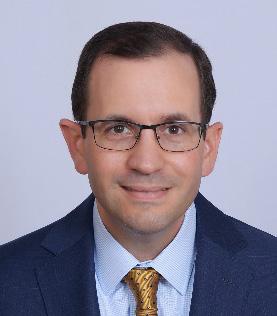
Brett Paddock President and Chief Executive Officer Titanium Industries, Inc .

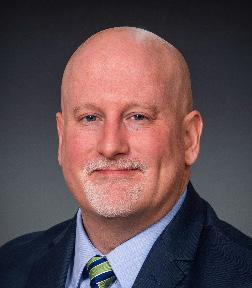

Jennifer Simpson Executive Director Ex-Officio Member of the Board International Titanium Association


Safety Education
Robert G. Lee President Accushape Inc
Industrial Applications
Robert Henson Manager, Business Development VSMPO-Tirus, US

Women in Titanium
Holly Both
Vice President of Marketing Plymouth Tube / Plymouth Engineered Shapes
Medical Technology
Eric Baum
Senior Business Development Manger Laboratory Testing Inc

6 TITANIUM TODAY
ITA Directors
Ti Today Contributor
ITA Committee Chairs
Michael C. Gabriele

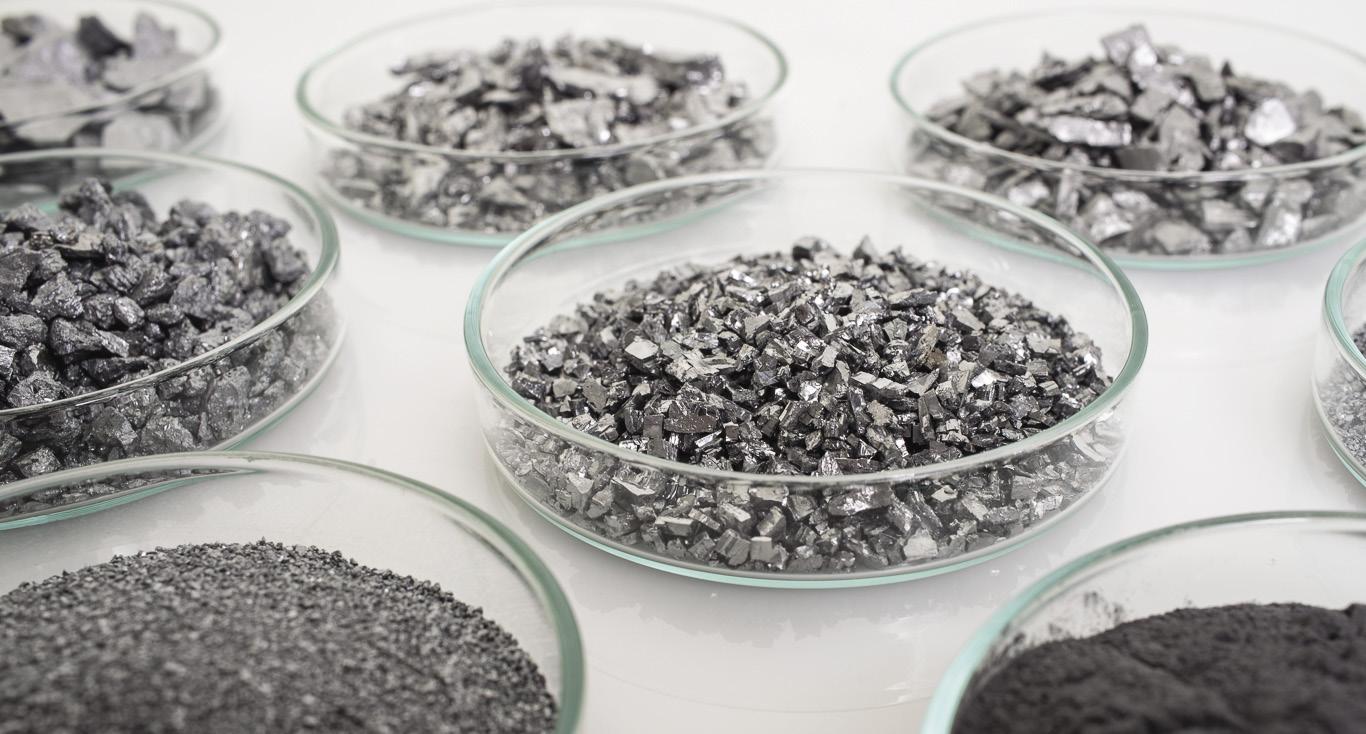

(+1) 610-693-5822 rai.sales@kymerainternational.com www.kymerainternational.com Master Alloys & Titanium Powders for Critical Applications
Charles Edwards Analysts Provide Outlook On Growth of Titanium, Aerospace Markets
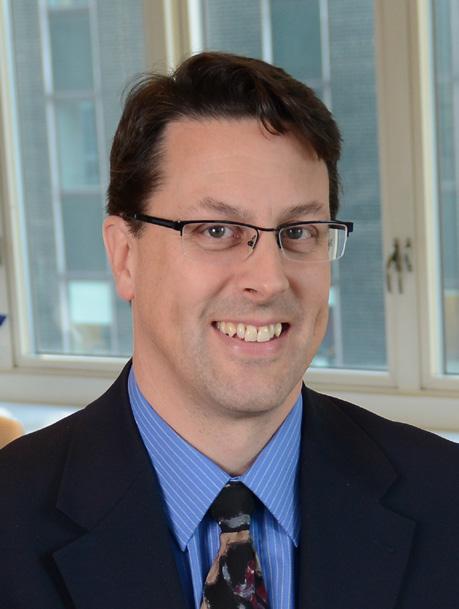 By Peter Zimm
By Peter Zimm
Introduction
Earlier this year, Charles Edwards completed their latest aerospace market report: “2023 Aerospace Titanium - Global Market Outlook and Supply Risk Assessment,” authored by Peter Zimm and Cliff Collier, Charles Edwards principals. Zimm and Collier indicated that, by the time this article goes to press, this report will be available on a new platform: AeroOutlook.com. AeroOutlook is a new resource that offers premium aerospace industry market reports meticulously curated and authored by distinguished aerospace market experts. This article summarizes some of the key findings from that report.
Aerospace Market Outlook
Total aircraft production value was $137 billion in 2022 and is expected to grow to $157 billion in 2023, almost a 15 percent increase from 2022 but still 24percent below 2018’s peak of $181 billion. Commercial air transports are approximately 50 percent of global aircraft production value; military is about one third and business and general aviation are about one fifth.
Aircraft production rates continue to grow but the industry continues to face numerous challenges as it recovers from the COVID downturn. The labor shortages that plagued the early recovery appear to be easing, especially for OEMs and Tier 1s. However, despite the improvement in attracting and retaining talent, many experienced workers were lost during the downturn so more workers are needed to achieve the same output. This will persist until new workers
become more experienced – a multiyear long proposition in our industry.

Sub-tier suppliers also face liquidity challenges as ramping rates require cash to invest in raw materials and work in process. OEM payment terms are now 90-120 days versus net 30 for raw material purchases and biweekly labor costs. Adding to this challenge, interest rates are higher and, due to greater risk oversight, banks are less inclined to make loans.
Suppliers throughout the supply chain also face cost and margin challenges. Pricing for products they sell are still sometimes based on higher, pre-pandemic volumes. At lower volumes, part costs are higher (e.g., lower build rates mean less volume over which to spread fixed costs). Furthermore, material, labor, and other costs have risen sharply, Further shaving margins. Lastly, production interruptions from other suppliers not delivering on time as well as increased quality oversight in the wake of crashes and highly publicized quality escapes have hampered the return to higher volume output.
MRO Market Dynamics, Growth
On the aftermarket side (titanium demand is partly driven by titanium replacement parts), the maintenance, repair and overhaul (MRO) market value was $211 billion in 2022 and is expected to grow to $226 billion
this year. A number of factors are contributing to MRO market growth. First of all, although the MRO market experienced a similarly deep decline in 2020, it has seen a quicker, V-shaped recovery. During the pandemic, air travel was low but airlines flew at levels exceeding underlying demand. This means there was more wear and tear on aircraft than expected given air travel demand. Of course, once travel restrictions were lifted, air travel resumed with a vengeance. Even though business air travel is about 2/3 what it had been in 2019 and the start of international air travel recovery was delayed, air travel is nearly back to 2019 levels. (I’m sure you’ve seen completely full airplanes again.)

The MRO market faces its fair share of recovery challenges as well. MRO markets (and for that matter airlines and airports) also experienced considerable labor shortages and continue to do so. MRO also experienced inflation for spare parts as well as for labor. MRO is also seeing significant shortages of spare parts. Used and surplus material availability has been particularly low due to a very low rate of retirement of older aircraft. Older aircraft are remaining in service for longer because airlines cannot receive enough new aircraft from manufacturers.
Overall, we forecast total aircraft
8 TITANIUM TODAY
Peter Zimm
We Deliver Actionable Clarity
PUT OUR INDEPENDENT & PRACTICAL PERSPECTIVE TO WORK FOR YOU
Charles Edwards helps aerospace companies worldwide develop greater intelligence about their markets, uncover opportunities, become more efficient, and strategically position their business.

We bring an independent viewpoint, giving you perspective beyond your personal networks and day-to-day operations. We bring experience – decades of it – plus that of our extended network – to your business challenges. And we provide actionable solutions, the specifics you need to decide not only where to make changes but how
Our Services Include:
Strategy & Market Studies Operations Improvements Mergers & Acquisitions Support
Leveraging our extensive aerospace expertise, industry network, and proven tool kit, and working as an extension of your team, we can help you address strategic and market challenges while they are happening.

Drawing from our on-the-ground experience and tools, we save you time and money by helping to solve operational and supply chain challenges in a shorter time frame.
Applying our market analysis, strategy development, and operations improvement capabilities to provide investors objective and independent assessments, as well as implementation plans of prospective acquisitions.
We have extensive experience assisting clients in all aspects of aircraft production and supply:
+1 (480) 734-4265 | charles-edwards.com
Aerostructures - Engines - Equipment systems - Avionics - Interiors Assembly and manufacturing - Aircraft design and technology - Additive manufacturing
production value will grow at 8.8-percent compound annual growth rate (CAGR) from $137 billion in 2022 to $209 billion in 2027. We forecast MRO will grow at 3.3percent CAGR from $211 billion in 2022 to $248 billion in 2027.

Aerospace Raw Material Outlook
Aerospace raw material demand is based on material for aircraft production as well as material consumed in spare parts for MRO. Charles Edwards’ raw material model breaks down aircraft fly weight into material composition by material family (i.e., aluminum, steel, titanium, nickel, and composites), aircraft system (i.e., aerostructures, engines, equipment systems, interiors, etc.), and other distinctions. Our forecast considers material substitution over time, changes in aircraft and engine OEM production mix, and other market dynamics. We then build up buy-to-fly ratios based on typical material removal during processes
such as machining, forging, and melting. The result is a buy weight composition by aircraft which we apply to the production forecast to arrive at aggregate raw material demand based on production. MRO material demand is based on expected spares requirements for repair and overhaul events.
The aerospace industry demanded 1.37 billion pounds of raw materials in 2022 across all the raw material families (an increase of 12 percent over 2021) We forecast aerospace raw material demand will grow at 5.9 percent CAGR from 1.37 billion pounds in 2022 to 1.83 billion pounds in 2027. The reason the CAGR is lower than overall production value is that raw material production precedes finished aircraft production by some period of time; therefore, raw material production is starting from a higher base in 2022 relative to final production.
Aerostructures
titanium content has grown as aerostructures’ composites content has grown. The latest round of clean sheet aircraft designs has seen much more carbon fiber composites, particularly in widebody aircraft (most notably the Boeing 787 and 777X and the Airbus A350 also has increased composites content due to its new wings) although the Airbus A220 narrowbody jet also boasts new composite wing. Charles Edwards forecasts that titanium demand will grow at 7.7 percent CAGR from 157 million pounds in 2022 to 228 million pounds in 2027.

10 TITANIUM TODAY
Outlook On Growth of Titanium, Aerospace Markets (continued)
AEROSpace Raw Materials Reports



 by Charles Edwards Principals Cliff Collier and Peter Zimm
by Charles Edwards Principals Cliff Collier and Peter Zimm
Stay Ahead with Market Intelligence
At AeroOutlook, we take pride in offering comprehensive market research specifically tailored to the aerospace and defense materials market. Our team of expert analysts and consultants boasts extensive experience in delivering in-depth analysis of global markets, ensuring you're always ahead of the curve.



Manage Risk in Your Aerospace Supply Chain
In the aerospace and defense sector, supply chain management isn't merely a logistical puzzle; it's a mission-critical challenge. This dynamic industr y grapples with a distinctive set of complexities that can have a profound impact on production and return on investments

+1 (480) 734-4265 | AeroOutlook.com Anticipate potential supply interruptions Get the reports that help you take action today!
Aerospace Aluminum Report Scan the QR Code to get the ReportS Aerospace titanium Report
Authored
Actionable Intelligence for Success Comprehensive Geopolitical Risk Assessment Market Size, Segmentations, and Growth • Key Trends Shaping A&D Materials Markets • Assessment of Supply Chain Challenges and Aerospace Mill Capacity Issues • Key Supplier Pro les • Risks in Ore Extraction and Primar y Metal Processing • For All Elements Used in Aerospace Alloys •
Aerospace Titanium Demand
Titanium is used throughout the aircraft: in the engine (e.g., compressor discs, blades and vanes, and cases), components/equipment systems (landing gear, ducting), and aerostructures (chords, spars, wing boxes, and pylons). Titanium is also used in the nacelle, hardware fasteners and brackets, and interior parts. Charles Edwards estimates 2022 aerospace titanium demand was 157 million pounds. Engines (about 40percent), equipment systems (about 25percent), and aerostructures (about 30percent) consumed most of aerospace titanium. Two-thirds of total aerospace titanium consumption ends up as finished parts on either an Airbus or a Boeing aircraft. The other one-third is ultimately consumed by the rest of the aircraft OEMs. The majority of aerospace titanium is processed into either forgings or plate. Although there are several commonly used aerospace titanium grades, Ti 6-4 accounts for the majority of the consumption.
A number of trends are impacting the aerospace titanium market.

• Increasing aircraft production rates. At the base is increasing aircraft production rates as well as robust MRO demand. As we saw earlier, aircraft production is expected to grow at 8.8 percent CAGR over the next 5 years (ironically, aircraft production growth rate is expected to be higher during this period because it was slower to recover than MRO).
• Material substitution.
Aerostructures titanium content has grown as aerostructures’ composites content has grown. The latest round of clean sheet aircraft designs has seen much
more carbon fiber composites, particularly in widebody aircraft (most notably the Boeing 787 and 777X and the Airbus A350 also has increased composites content due to its new wings) although the Airbus A220 narrow-body jet also boasts new composite wings. This is due to titanium’s higher compatibility with carbon, compared with aluminum’s compatibility. At the same time, titanium saw its position erode in engines, as nickel superalloys have moved forward into the high pressure compressor to handle increasing temperatures and fan blades on some latest generation engines are now made from composites.
• Aircraft production mix . The early air traffic recovery favored short haul routes which are primarily served by narrowbody aircraft. Meanwhile, recovery of long haul routes served by widebodies languished until China finally removed its COVID restrictions. As widebody production finally recovers in earnest, these higher-titaniumcontent aircraft will drive higher titanium growth rates.
• Ukraine invasion. As everyone in the titanium industry knows, Russia’s invasion of Ukraine has had, and continues to have, a significant impact on aerospace titanium supply. Although Russian titanium is not subject to western sanctions, the threat that supply might be interrupted by Putin or that it may become subject to sanctions later have caused buyers to seek other sources of supply.
• Additive Manufacturing. While the hype around additive manufacturing has cooled,
development work continues on this technology and titanium alloys are among the most popular metals with which to work due in part to its high cost. Even though the number of additively manufactured titanium parts (whether in development or in production) is impossible to ascertain with certainty, it does appear that heart development and part approvals using titanium materials continues.
Charles Edwards forecasts that titanium demand will grow at 7.7 percent CAGR from 157 million pounds in 2022 to 228 million pounds in 2027.
Upstream Supply Risks
Titanium is extracted from ore, refined into sponge and then into primary metal, then melted into alloys used in aerospace production. As Russia’s invasion of Ukraine starkly reminded us, the locations where all three levels of titanium production take place are important. But this goes well beyond titanium. The most-utilized aerospace alloys include other elements such as vanadium, aluminum, magnesium, and molybdenum and where these are mined and refined is important as well. Overall, the elements that comprise aerospace titanium alloys are mined or refined in 36 different nations, seven of which are considered medium-high or high risk places to do business (risk equals the prospect of a force majeure event in the next three years). The upstream supply risk assessment in our report helps consumers of titanium evaluate vulnerabilities and identify areas for which to develop contingencies.
12 TITANIUM TODAY
Outlook On Growth of Titanium, Aerospace Markets (continued)
Leading Titanium Manufacturer

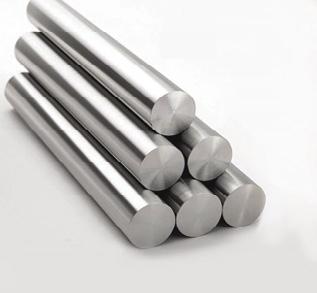
Premium Quality, Stability and Reliability. One-Stop titanium alloy production and service.
ABOUT US
A dozen years of titanium alloy production and research experience, with more than 100 patents and achievements to its credit, mastering a number of core technologies; Accredited with Nadcap non-destructive testing certificate and AS9100D, ISO14001, ISO 45001 and other certifications;

CORE PRODUCTS
Titanium bar/billet
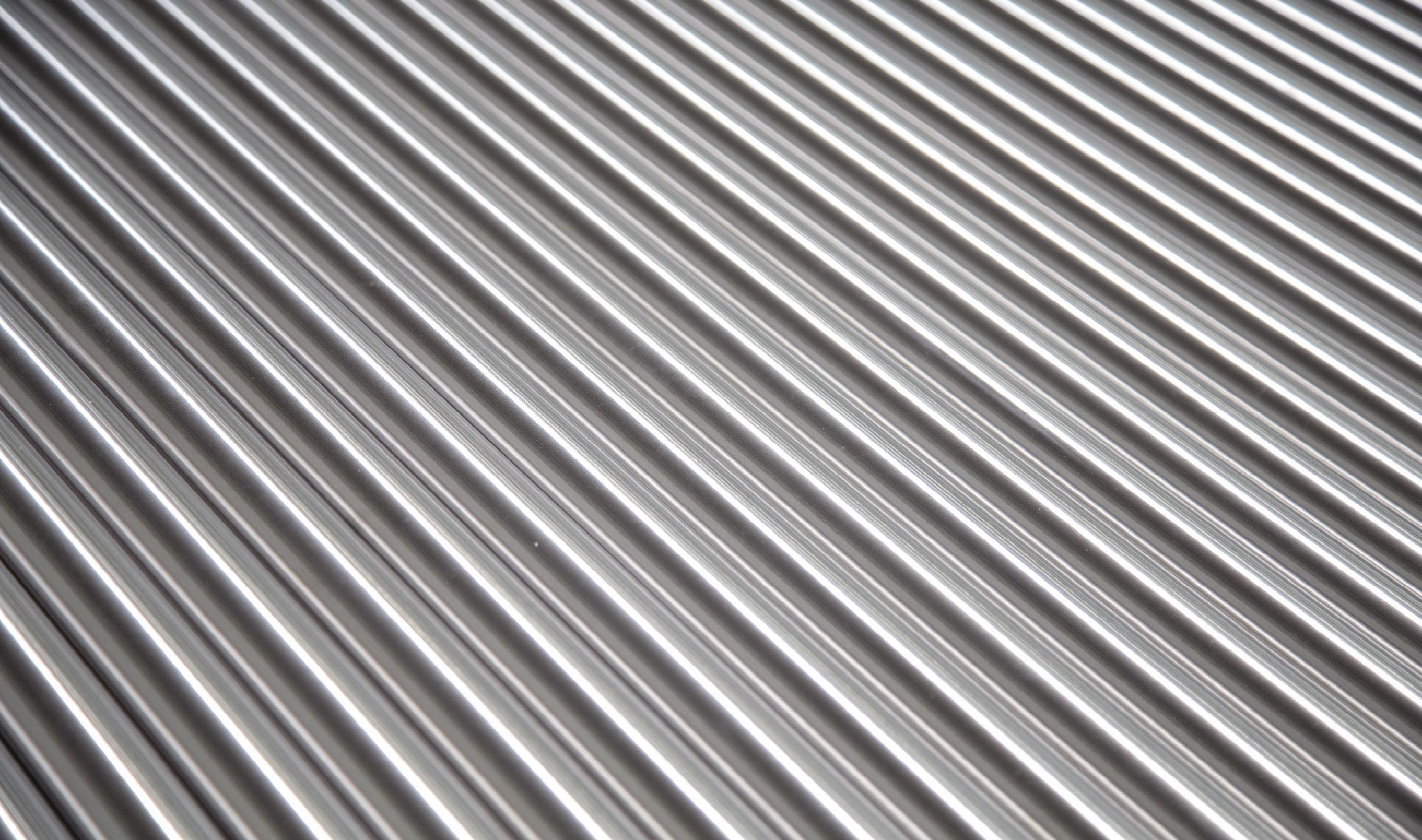
Size range: Φ15-500mm
Grade: Ti6Al4V, Ti-6242, Ti-6246, Ti-38644, Ti-15333, etc.
Titanium wire rod coil

Size range: Φ1.0-20.0mm
Grade: Ti6Al4V, Ti6Al4V ELI, Ti-38644, Ti-6242, Ti-6246, Ti-15333, Ti-422, etc.
Titanium forging
Size range: customized, disc, bar, ring, etc. L(max):14m, W(max):4m, H(max):4m.
Grade: Ti6Al4V, Ti6246, Ti6242, Ti662, Ti38644, Ti15333, Ti1023, Ti422, etc.
For more information, please visit www.tcae.com/en/
—TC
Aerospace
Shaanxi TianCheng Aerospace Co., Ltd.
+86-29-33336000 tc@tcae.com No 3, Gaoke 3rd Rd, Qindu District, Xianyang, Shaanxi, China. 1 2 3
Aerospace Titanium Supply

While titanium metal is used in multiple industries – medical, dental, oil and gas, recreational products, and aerospace – and titanium mills melt product that goes into multiple industries, four mill product suppliers are the largest providers of titanium bound for the aerospace market: ATI, Howmet, Timet (part of PCC), and VSMPO supply over 80 percent of total global aerospace titanium demand. Even though most of their facilities are located in North America or Europe, as noted above VSMPO’s facilities in Russia have been a major source of supply to the global aerospace industry. These suppliers vary in their emphasis on structural versus rotary grade titanium, what grades and forms they specialize in, how vertically integrated they are, and which end customers are most important to them.
There have been various announcements of aerospace mill product capacity expansion plans (e.g., Timet’s expansion in West Virginia), but the long-term response of the aerospace mill product supply base to the loss of Russian titanium capacity is a critical issue—one we also grapple with in our 2023 Aerospace Titanium report. n
(Editor’s note: Charles Edwards Management Consulting, based in Gilbert, AZ, [website: https://charles-edwards.com/] is a specialist advisory group focused on the aerospace industry and related titanium market trends. As stated on its website, the Charles Edwards organization assesses external and internal environments through focused field research, domain expertise, and industry-wide access to key decision makers to develop sustainable and actionable strategies, market analysis, strategy development, and operations improvement capabilities to give strategics and investors objective and independent assessments and implementation plans of prospective acquisition.)
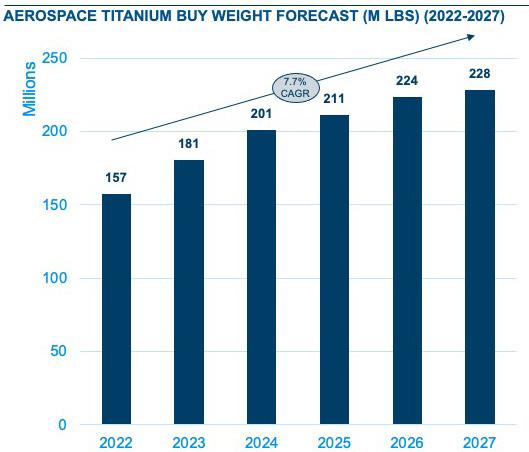
14 TITANIUM TODAY
Titanium H Grades Win Approval For ASME Boiler and Pressure Vessel Specifications (continued)


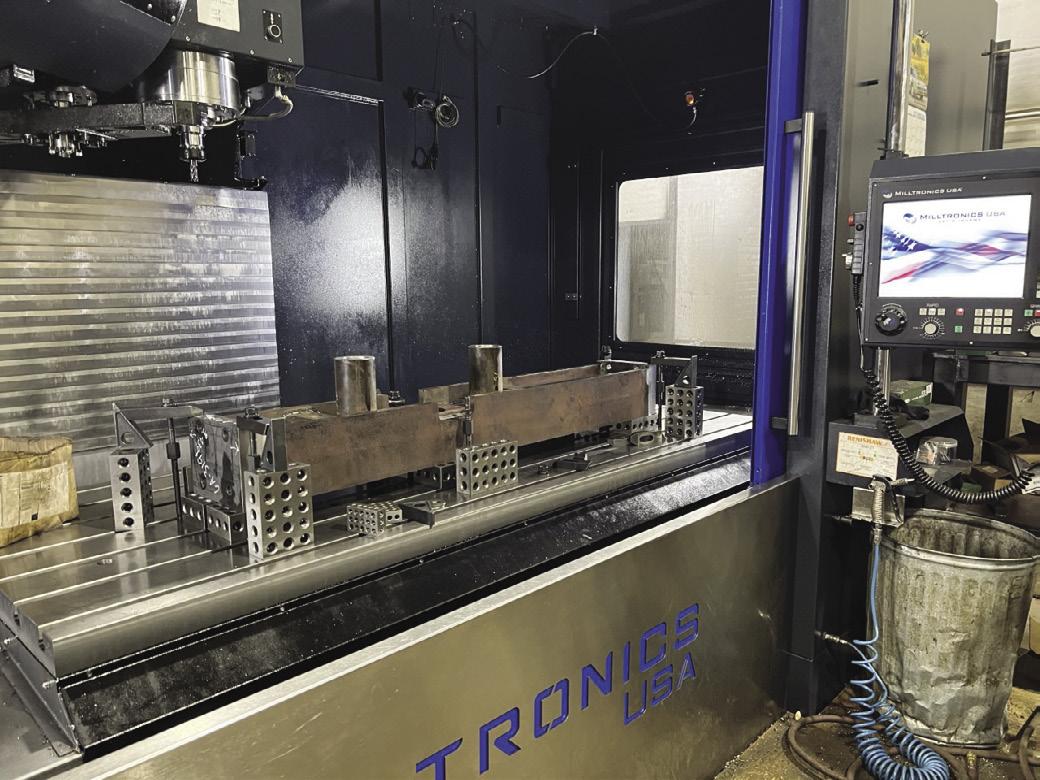


ITA 2023 Lifetime Achievement Award
Conard Stitzlein Traces Journey from Ohio Farm To a Pioneering Leader in the Titanium Industry
By Michael C. Gabriele

Sixty-four years ago, Conard Stitzlein had an idea, that a commercial market would help stabalize the Titanium Industry. He borrowed $500, found an office, had a phone, and a farm truck with a 15-foot cargo bed. Blessed with an entrepreneurial spirit and keen business instincts, he decided to start a company and called it “Astro Fab.”
“I had a folder full of inquiries from chemical processing companies looking for titanium samples,” he recalled. “I wondered if I could start a business by supplying titanium to customers.”
It was from these humble beginnings that he built a successful six-decade career in the U.S. Titanium Industry. As a tribute to his efforts, Conard Stitzlein is the recipient of the International Titanium Association’s (ITA) prestigious Lifetime Achievement Award for 2023.
The mid-1950s were the very early days of the U.S. titanium industry, when commercial business markets were just beginning to take shape for the “wonder” metal. Though optimistic, Stitzlein may have had some initial qualms. “I remember reading an article in American Metal Market that said ‘the bloom is off titanium’s rose.’” Cancellations were rocking the metals industry and government programs were being cut.
Warehouses were overrun with excess inventory.
Despite the grim news reports, Stitzlein persevered and spotted business opportunities that others didn’t see. He worked at Johnson and Funk Metallurgical, where he served as a sales manager, beginning in the spring of 1956. In 1958 the company acquired Mallory Sharon Steel. One year later, Stitzlein left the company to pursue his own ambitions.

Flying solo at Astro Fab, good fortune smiled on him in 1959 when his friends at Johnson and Funk/Mallory Sharon
told him that they had accumulated a large pile of unwanted titanium scrap. “They didn’t know what to do with it as remelting had not been developed,” Stitzlein recalled. “They told me to take whatever I needed, so I loaded up my farm truck with titanium mill forms that did not meet aerospace specs, which included bar stock, plate, and cut shapes.”
Stitzlein now had the material he needed to address his folder full of inquiries from chemical processing companies. Astro began to supply corrosion samples and made parts and pieces for corrosion evaluation. Sales started to grow and Stitzlein made $123,000 in his first year, with 50 percent margin, followed by revenues of $373,000 the following year. “It was a fun start,” Stitzlein said. Feeling restless, Stitzlein left Astro and got into the metal heat treating business in the Los Angeles area. In 1965 he returned to Astro, then known as Astro Metallurgical, as president to help re-energize the company. A series of other moves followed, such as managing various companies and starting up titanium wire operations in California and Fabrication/Warehouse in Texas. Eventually,


16 TITANIUM TODAY
Conard Stitzlein ‘Astro Difference’ promotional flyer, circa 1974
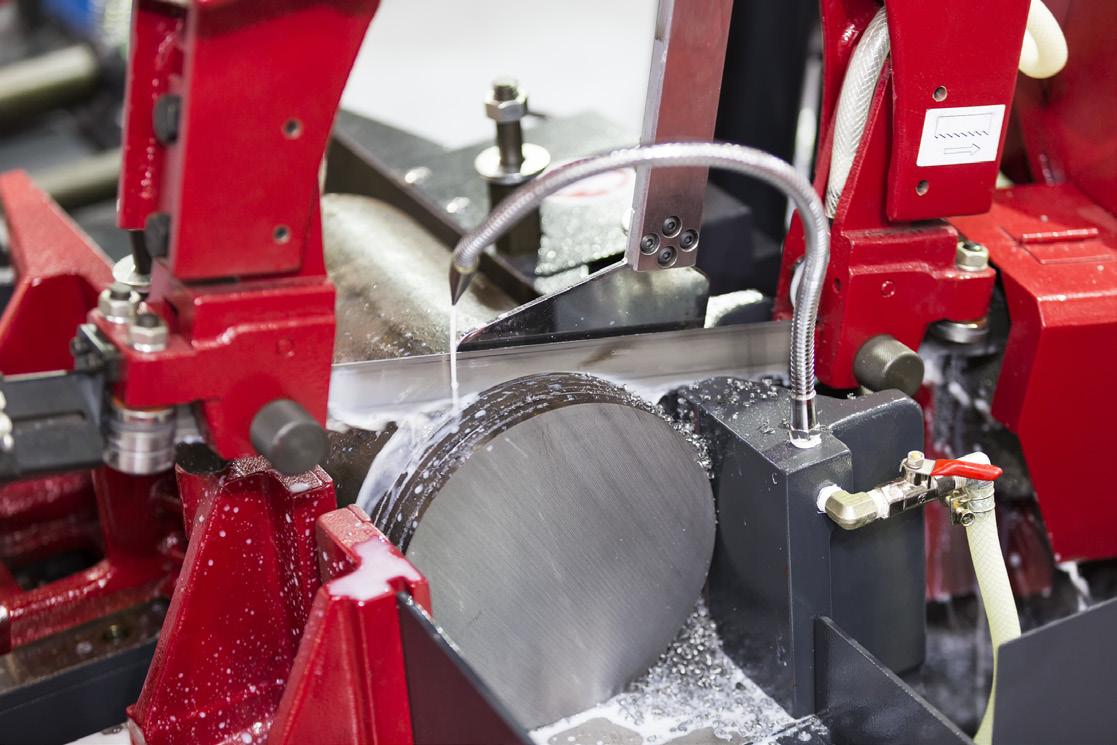


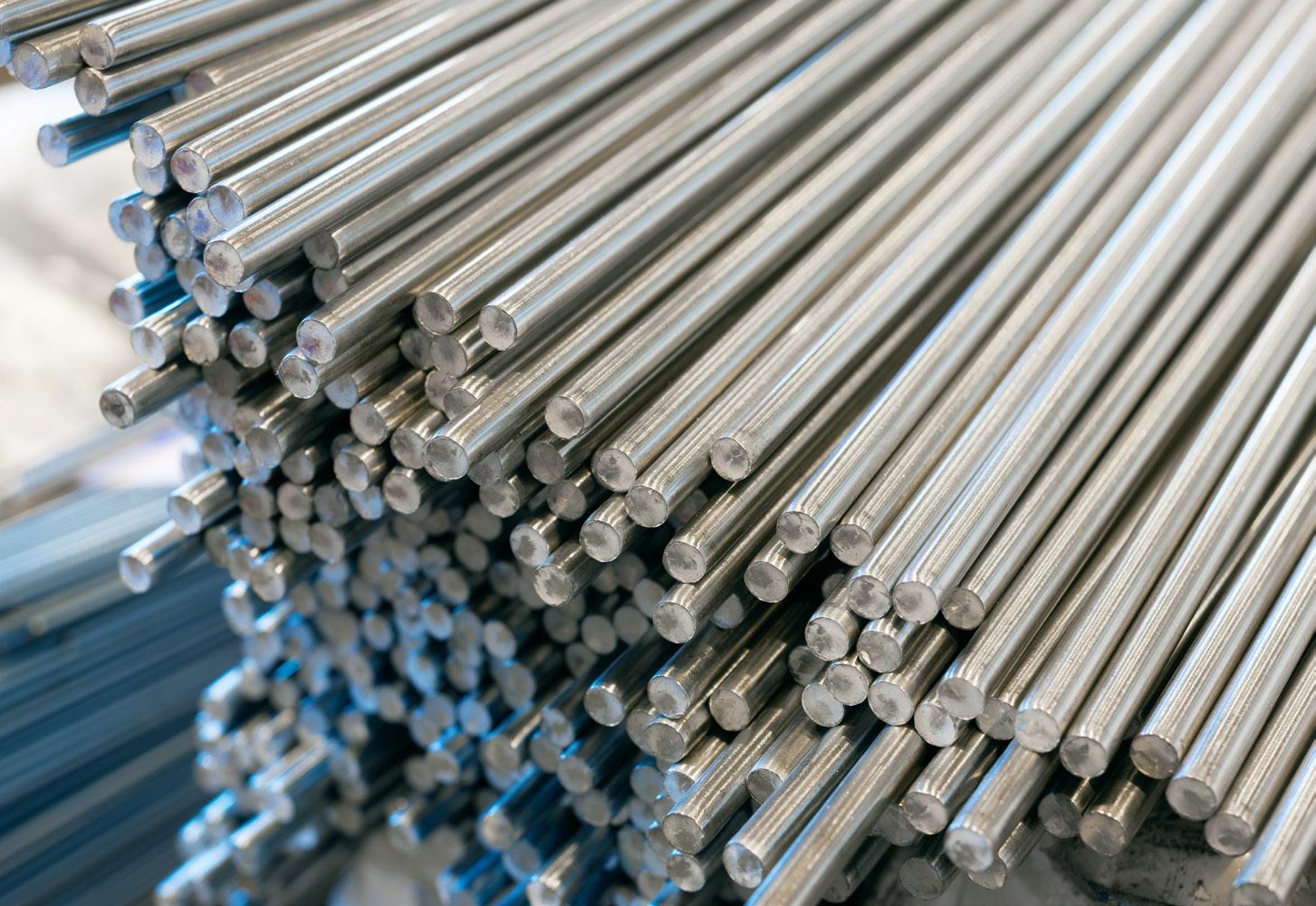







YOUR SPECIALTY METALS SOLUTIONS CENTER COIL SHEET STRIP PLATE BAR NEAR NET SHAPES 888.282.3292 | www.upmet.com | sales@upmet.com NICKEL TITANIUM STAINLESS STEEL COBALT PRODEC® ALLOY STEEL CCM ALUMINUM DUPLEX AS9100D — ISO 9001:2015 — ISO 13485 DFARS COMPLIANT UNITED PERFORMANCE METALS HEADQUARTERS — 3475 SYMMES RD, HAMILTON, OH 45015 OAKLAND, CA | LOS ANGELES, CA | HARTFORD, CT | CHICAGO, IL | GREENVILLE, SC INTERNATIONAL — BELFAST, NORTHERN IRELAND | BUDAPEST, HUNGARY
he established Tricor Metals in Wooster, OH, (purchasing the former Astro Metallurgical facility), a 150,000-square-foot facility with three crane bays.



The company, now known as Tricor Industrial Inc., also opened a facility in Conroe, TX. Today Tricor (website: https://tricormetals.com/) touts itself as a leading international distributor of titanium mill products (plate, sheet, bar, billet, pipe and forgings) according to its website. Tricor also is involved in custom fabrication and builds process equipment in titanium, tantalum, zirconium, high-nickel alloys, duplex and 300-series stainless steel, as well as offering field repair crews. Stitzlein’s son, Michael, serves as president of the company.

His extensive resume in the industry also includes being tapped in 1984 as the first president of the ITA, which evolved from a group of metal industry executives known then as the Titanium Development Association. Stitzlein said one secret to the success in his career is that he was always willing to ask for help, and then he honorably held up his end of the bargain. “This is not just my award,” he declared, citing his gratitude for being the recipient of the ITA’s Lifetime Achievement honor. “There were a lot of other people who helped me along the way. I’m just a farm boy from Ohio. I knew where to go to get answers. People were anxious to help me.”
All throughout his dealings in the titanium industry, Stitzlein held onto his livestock farms in Ohio and Montana, which provided him with a measure of security during volatile periods in the metals business. His wife, Nancy, kept the farm operations going, raised five children and bought real estate, proving to be his best business partner and supporter.
18 TITANIUM TODAY
ITA 2023 Lifetime Achievement Award: Conard Stitzlein (continued)
Reflections of a Son

“My father likes to joke that he didn’t get very far in life. He only got two houses up the road from where he was born,” Michael Stitzlein, Conard’s son and the current president of Tricor Industrial Inc., said, providing a heartfelt words to honor his dad’s long career. “He put me on a tractor at an early age. I think I was six years old. I remember helping him shear sheep and listening to him play the trombone and call square dances. He instilled in me a strong work ethic and gave me responsibility at an early age and that our mission is to create employment. With his backing the last 30 years has been a journey putting the former Astro Metallurgical back together as Tricor in the same location in Wooster. When our family went on vacation together my dad would make sales calls along the way. I admit to doing the same. However the most important thing I have learned from my father is to surround yourself with good people. Once titanium gets in your blood it’s there to stay and that’s why Wooster is one of hubs in the world for titanium.”
According to the accolades listed on his nomination form, Stitzlein was a pioneer in first developing and then promoting the titanium service center model to the chemical processing industry (CPI). “He eventually grew his business into a major player in the fabrication of titanium equipment to chemical plants, as well as being a major source of stocked titanium for other fabricators and end users. He helped to develop the markets for titanium in the chlorine industry, the terephthalic acid industry, and the mining industry by having a ready supply of titanium in stock. In addition, he developed a stable
Conard Stitzlein said one secret to the success in his career is that he was always willing to ask for help, and then he honorably held up his end of the bargain. “This is not just my award,” he declared, citing his gratitude for being the recipient of the ITA’s Lifetime Achievement honor. “There were a lot of other people who helped me along the way. I’m just a farm boy from Ohio. I knew where to go to get answers. People were anxious to help me.” His extensive resume in the industry also includes being tapped in 1984 as the first president of the ITA, which evolved from a group of metal industry executives known then as the Titanium Development Association.
of competent engineers that could design titanium into these various process equipment requirements. He created a network of companies that were instrumental in promoting early adoption of titanium into industrial applications.”
Stitzlein promoted new welding techniques for titanium in CPI applications. “He tested and introduced novel design methods, such as using titanium Grade 2H per Division 2 of ASME to expand the use of titanium in the purified terephthalic acid (PTA) industry by making fabrications lower cost and more competitive with nickel alloys. Conard pushed the application of titanium for flue gas desulfurization (FGD) scrubbers in the electric power market, and worked with Timet on
joint technical efforts in the 1980’s to get titanium secured as an accepted corrosion resistant material in this market.”
He created and developed Astro Metallurgical in the 1970s and 1980s and Tricor Metals in the 2000s and “positioned these entities, through expansion and reinvestment, as experts in titanium fabrication, with company representatives routinely providing technical, technical marketing, and commercial presentations around the world on the design, fabrication, and corrosion resistance of titanium in CPI applications.” n
20 TITANIUM TODAY
ITA 2023 Lifetime Achievement Award: Conard Stitzlein (continued)
Titanium Stainless steel Polymers
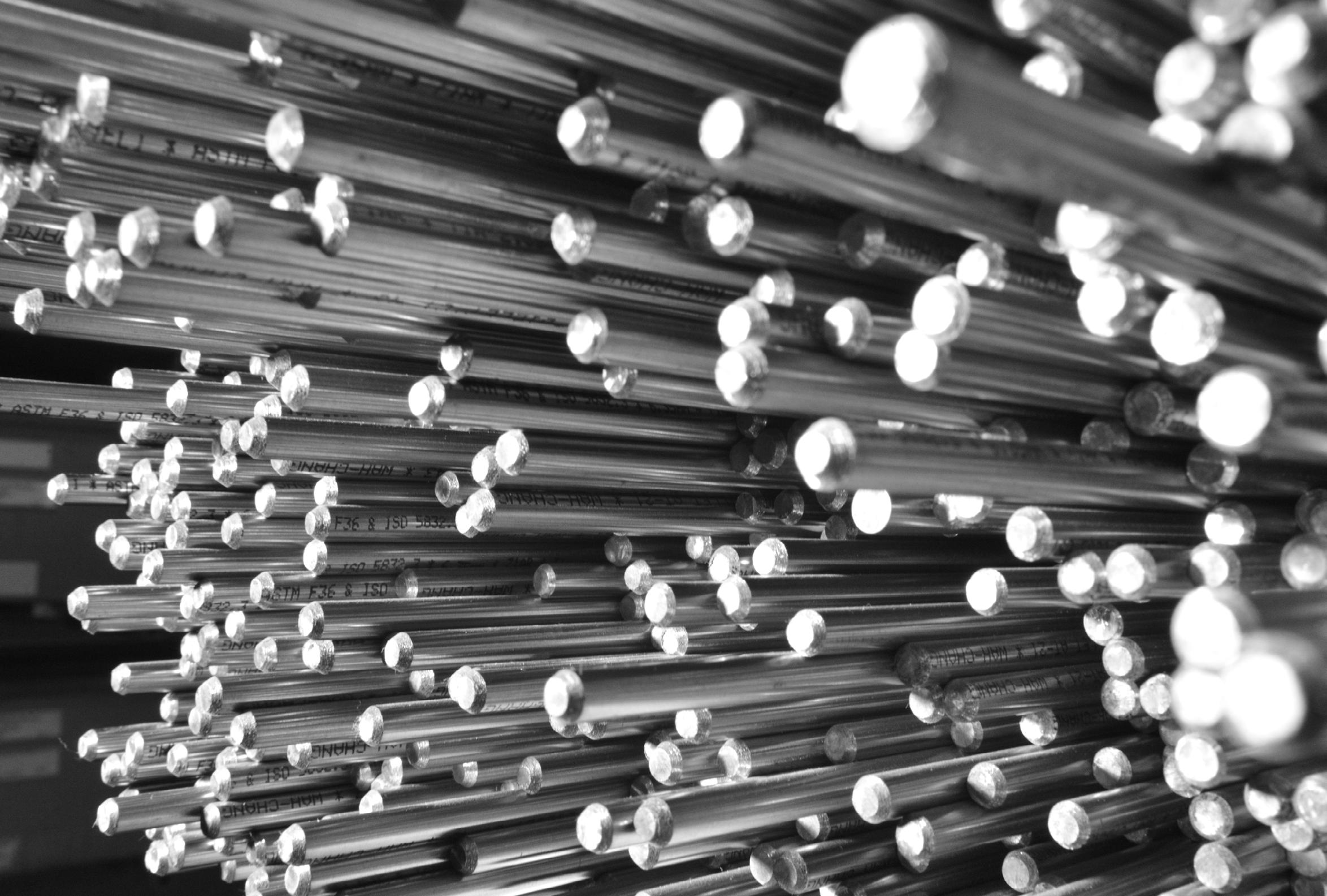
ACNIS GROUP SETS UP A NEW SUBSIDIARY IN CHICAGO
Established in France (Lyon), the stockist Acnis Group is one of the world leaders in the distribution of metal alloys especially in TITANIUM, in all forms : sheets, bars, tubes and powder for 3D printing.

ISO 13485 certified since 15 years, the family business has specialized in the medical field since its creation in 1991, to meet the demand of orthopedic manufacturers and dental implants, as well as surgical instruments.
ACNIS Group acts as a buffer between producers and users, thanks to its 600 to 700 tons rotating stock and 1,300 references of different origins. Our unique cut-to-size service center (15 machines: waterjet, high-definition waterjet, plate sawing, bar sawing, shearing, machining, chamfering) allows us to reduce your costs by optimizing scrap rates.
As a result, the company is able to deliver very quickly its customers, in barely a week, no matter the ordered quantity. Major implant manufacturers among the main American and European OEMs themselves call on ACNIS Group to source their metal alloys.
The last creation of ACNIS USA stock in 2023 in Chicago has changed the game. Acnis Group is now the only distributor that can stock and deliver any quantity in North America (ACNIS TITANIUM & ALLOYS USA-Chicago), South America (ACNIS DO BRAZIL-Sao Paulo), Europe (ACNIS FRANCE-Lyon), South Asia (ACNIS CHINAShanghai) for global worldwide contracts.
Acnis is your one-stop shop for all TITANIUM grades, stainless steel (316L, 420B, cobalt chrome, 17/4 PH, high nitrogen alloy, Custom 455, Custom 465…) and polymers.
Our dental subsidiary BCS, a European leading distributor of CAD CAM products for additive manufacturing, is registered with the FDA for titanium powder & discs, and cobalt chromium powder.

ACNIS TITANIUM & ALLOYS 1940 E Devon Elk Grove Village 60007 - IL - USA
+1 (312) 826-6850
qgoliot@acnis-titanium.com
TriTech Titanium Focuses on MIM To Design, Produce Net-Shape Parts
It’s not often that a new company springs to life fully formed, with decades of experience at its back. TriTech Titanium Parts in Detroit is one of those rare companies. Founded by Bob Swenson, president of TriTech, in April 2022, TriTech was spun off from its parent company, AmeriTi Manufacturing Company, formerly owned by Swenson, when he sold the bulk of the business to Kymera International. Swenson retained the parts division of the business, which is well on its way to meeting its ambitious first-year growth target to double its revenue.

An ISO 9001:2015 certified company, TriTech specializes in producing net shape titanium parts for a wide array of industries and offers several production methods. Its titanium metal injection molding (MIM) operation is focused on industrial applications and firearms accessories. The company operates with a full domestic North American supply chain to ensure it can procure supplies for its customers when they need them and to avoid potential delays due to unexpected disruptions in the global supply chain.
“There are very few companies producing titanium precision net shape parts using metal injection molding,” Swenson said. “At TriTech, we’ve developed our MIM technology throughout years of in-house process research and process improvements.”
Titanium MIM is especially suited for producing small net-shape parts that have intricate designs or complex geometries, including profiled holes,
internal and external threads, finely detailed surface textures, embossed and debossed lettering, sharp edges, markings and more. The mold design process offers great flexibility to create custom-made small net shape parts that are often in the range of a halfgram to as large as 200 grams.
It starts with the custom-made mold design for each part. TriTech, per its ISO designation, does not design the parts. The parts are designed by its customers. TriTech prefers to get involved with customers early in the design phase to enhance the part design for manufacturability. Its skilled engineering team specializes in designing and producing titanium parts and can modify the design so the injected powder feedstock can flow freely and evenly through the intricacies of each custom mold.
For the more complex parts, TriTech uses detailed computermodeled flow analysis to make sure the part injects completely to fill the die cavity with no porosity or variation in density throughout the

part, ensuring uniformity of the injected titanium alloy.

“Customers come to us with a solid model file,” said Swenson. “This is the stage where we collaborate with them to optimize the design for manufacturability, while at the same time giving customers all the features that they want and reducing scrap.” Swenson said that his engineering team can incorporate features, such as putting a logo on the part or adding a texture on the surface while not adding to the cost of the part.
Titanium Metal Injection Molding
To power its MIM operations, TriTech’s Detroit factory uses two Arburg ALLROUNDER injection molding machines. One machine operates with the original factory settings, while the other has been upgraded to manage a higher capacity to make bigger parts that weigh 200 grams. “As we grow, we will add additional capacity with new in-stock machines,” Swenson said.
TriTech uses the standard Titanium 6–4 alloy for its high tensile strength, high corrosion resistance and lightweight properties. It does not customize the alloy. Customization is introduced when the TriTech team collaborates with each customer to refine parts design for manufacturability. TriTech uses a spherical titanium powder, with spheres measuring 25 microns or less. (By comparison, a single human hair measures about 40 microns.)
With a high-shear mixing device, the spherical titanium powder is
22 TITANIUM TODAY
(The following is a guest article from TriTech Titanium Parts LLC, written by Patricia Radice of The Quell Group, Troy, Mich., with direct input from Bob Swenson, TriTech company president.)
Bob Swenson, President, TriTech Titanium Parts LLC.
blended with an organic binder to create a mixture in the form of a pelletized feedstock. The feedstock is measured to the exact “shot” size needed for the specific part. The feedstock is heated and injected into the part mold, which, when cooled, yields a “green part.” At this stage, the green part is prepared for sintering by removing the binder material from the titanium.
TriTech uses two debinding processes to ensure the effective removal of the binder material. If sintering took place with insufficient removal of the binder material, it would cause deformation and cracking, and likely lead to part failure. TriTech uses solution debinding as the initial step in its two-part debinding process. The
green part is submerged in an organic solvent to remove approximately one-half of the binder. Next, the remaining binder material is removed during thermal debinding, a process that takes place in the sintering oven while preheating the parts to sintering temperature. After debinding, the “brown part” emerges that is ready for sintering.
TriTech’s uses an Elnik MIM 3000 Series vacuum sintering furnace and the sintering takes place at temperatures
computer aided design (CAD) model for accuracy.
Growth is an ‘Odyssey’

As TriTech continues to pursue its ambitious growth strategy, it recently adopted an enterprise resources planning (ERP) system to streamline management of the entire manufacturing process. The Odyssey ERP system is cloud-based and was developed to meet the specific needs of metal parts producers. TriTech is implementing it to run its entire operation, from procurement through manufacturing and parts delivery.

of 2,300ºF to 2,400ºF. The heat causes the compact powders in the brown part to bond and form a fused mass, significantly increasing its strength and structural integrity. The parts are designed so that, once the sintering process is complete, they need no subsequent machining, which is a considerable cost and time savings for customers. Additionally, TriTech uses vision and scanning systems to measure parts dimensions and firm tolerances. For final inspection, the finished part is scanned and compared with the
“The Odyssey system is a comprehensive solution that we use to manage the entire scope of business operations, from forecasting to capacity planning to ordering raw materials to managing operating requirements and scheduling, productivity, record keeping and data collection, while significantly reducing our reliance on paper documents,” said Swenson. “A major advantage to using the system is that it records production data in real-time, for example, productivity, dimensions, weights, and other and records the weight of the part and other valuable information. We can export that data to our statistical process control program.”
Swenson stated that, with the Odyssey system, all of TriTech’s data is stored in one place where team members can access it when needed from wherever they are in the plant, which creates efficiencies while increasing accuracy and quality.


24 TITANIUM TODAY
TriTech Titanium Focuses on MIM To Design, Produce Net-Shape Parts (continued)
Removing green part from MIM machine
Loading trays of “brown parts” into a MIM vacuum sintering furnace.
TriTech’s vision and scanning systems measures parts dimensions and firm tolerances.
Positioned to Respond.
Our continued investment and expansion has us in the right place to meet your needs.
Our capacities and resources are aligned. We are prepared and well positioned to supply a full range of products including ingot, centerless ground bar, precision coil, additive wire, premium fine wire and shapes – all at competitive lead-times.


We are expertly equipped to address the growing demands of the aerospace, medical, recreation, infrastructure, and industrial markets worldwide. We understand the ever-changing factors of the industries we serve and are committed to supporting the growth of your business.

Fully Integrated Titanium Manufacturing
| www.perrymanco.com
724.746.9390
Titanium MIM is especially suited for producing small net shape parts that have intricate designs or complex geometries, including profiled holes, internal and external threads, finely detailed surface textures, embossed and debossed lettering, sharp edges, markings and more. The mold design process offers great flexibility to create custom-made small net shape parts that are often in the range of a half-gram to as large as 200 grams.
TriTech is dedicated to quality production and performance throughout the organization and is a firm believer in compliance with ISO standards. TriTech is also committed to continuous improvement.
“We have continuous improvement meetings once a week to look for new markets and customers and to discuss ways to increase quality, productivity and product yields,” Swenson stated. “We strive to make small titanium net shape parts with complex geometries that do not require subsequent machining that can be immediately used in the customer’s application with no further finishing work.”
MIM is best suited for largebatch parts. “These precision molds can be pretty expensive to make,” said Swenson. “So, it’s best used in applications that produce thousands of parts.”
“The MIM process has been around for decades because it works so well,” Swenson continued. “However, advances in the technology used in MIM parts production continues to be refined, so that we can offer additional benefits to our customers.”
A Bright Future for Titanium MIM
“As our name implies, we’re focused on producing net shape

parts made from Titanium. We’re focused on Titanium and plan to stay that way,” said Swenson. “Before the spin-off, we had been operating for three- to four-years making net shape titanium parts. Now, as an independent company, we’re coming up on our one-year anniversary. Our near-term business goals are to double our sales every year. Longer term, we see it continuing to double, and hopefully, even to triple.”
Alongside MIM, TriTech offers two additional technologies to make titanium net shape parts: 3D binder jet printing and investment casting, all under one roof in Detroit. The three technologies complement each other. There seems to be a specific technology that aligns best with each customer’s needs. Cost, volume and part complexity are all factors the company assesses in matching the right production method to each part.
“There is no one-size-fits-all technology when manufacturing titanium precision parts to produce the best performance characteristics,” said Swenson. “We’ve proven that different technologies provide different results and therefore we have assembled a one-stop production resource offering the best option to many industries. We match the design to the best manufacturing process to make a superior net shape
part.”
According to Swenson, MIM is clearly the winner as to what can be accomplished with titanium. It’s fast, low cost, meets very tight tolerances and provides exceptional surface quality. The 3D binderjet printer can serve as a good prototype tool leading to MIM. It can produce a single test part or a larger number of parts. Binderjet printing also uses spherical titanium powder and finishes with a sintered part much like MIM. The printing process allows some very complex shapes like lattice structures and porous shapes.
As part of TriTech’s growth plan, Swenson said he and his team are proactively pursuing contact with potential customers through several channels. “We’ve been participating in trade shows as exhibitors and speaking at technical conferences,” commented Swenson. “And, we’re marketing our product offerings with our updated website and are even testing out social media.”
So far, the growth strategy seems to be working. Swenson said TriTech has no shortage of customer inquiries, and the business is growing. Most customers are from North America, although the company is currently working with a customer in Europe. “It’s a global market,” Swenson said. “And we’re eager to continue growing to participate in it.” n
(Editor’s note: As mentioned above, this is a guest article provided by TriTech Titanium Parts LLC [website: https://tritechtitanium.com/]. Bob Swenson, an executive in the titanium industry for over three decades, is the owner and president of the company. As stated on the website, TriTech’s expertise in MIM dates back to 2017 at AmeriTi Manufacturing. TriTech’s internally developed its own MIM process technology.)
26 TITANIUM TODAY
TriTech Titanium Focuses on MIM To Design, Produce Net-Shape Parts (continued)
Harness our leading-edge vacuum technology to help assure your flight-critical parts go the distance.

Aerospace Vacuum Heat Treating Services


Advantages
• Bright, clean, scale-free surfaces with minimal distortion
• Furnace capacities up to 48 feet long and 150,000 lbs
• Full line of major aerospace approvals
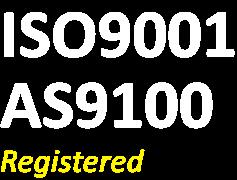
• Titanium and high nickel alloys

solaratm.com
1-855-WE-HEAT-IT
Eastern PA • Western PA • California • South Carolina • Michigan
Annealing • Degassing • Creep Forming and Flattening • Stress Relieving • Brazing Solution Treat and Age (STA) • Homogenizing • Sintering • Hydriding/Dehydriding
Solar Atmospheres heat treated the titanium manifold weldment used on the Orion Launch Abort System for the NASA Artemis I Program.
EB Systems Offers Insights on Benefits, Challenges of Electron Beam, Laser Beam Titanium Welding
 By Cory Yaeger
By Cory Yaeger
(Editor’s note: The following guest article comes from EB Industries LLC, Farmingdale, NY, and provides insights on electron beam and laser beam manufacturing technology for welding titanium. Cory Yaeger is the program manager of EB Industries.)
Electron beam and laser welding are fusion processes that can produce highenergy precision welds in a wide range of metals, including exotic and dissimilar materials that are hard to weld by conventional welding processes. However, there are significant differences between the two. Based upon the industry specifications, materials involved, the weld joint design/purpose, and cost considerations, typically there is a clear choice when determining which process best fits the application.
Other types of fusion welding, such as Arc, tungsten inert gas (referred to as TIG or GTAW), or metal inert gas (referred to as MIG or GMAW) might be an option, but if your requirement is for precision, deep yet narrow, pure (no filler material typically needed) welds, then electron beam (referred to as EB) or laser welding is often the best method of joining. Because the physical components that generate electron beams and laser beams can be CNC controlled, you have a highly repeatable, versatile joining technology capable of welding both the smallest of implantable medical devices and yet also able to deliver the tremendous amounts of power required to weld structural aircraft parts. These welds can meet or exceed all metallurgic, structural, or hermetic sealing requirements while meeting all cosmetic/aesthetic
needs and eliminating or reducing post-weld machining. With proper planning and tooling, both processes can be more cost-effective than conventional joining technologies.
Electron Beam Welding

Although electron beam and laser welding both deliver high-energy precision welds, they significantly differ from each other in terms of underlying physics and functional operation. It is in these differences that one process might have an edge for a particular application.
EB welding technology was developed in the late 1950s and was quickly embraced by high-tech industries, such as aerospace, for the
precision and strength of its resultant welds. An electron beam weld can be very accurately placed, and the weld can retain up to 97 percent of the original strength of the material. Basically, electrons are generated (via a tungsten filament) and then accelerated to very high speeds using electrical fields. This high-speed stream of electrons is then focused, shaped, and directed using magnetic fields (magnetic lenses) and precisely applied to the materials to be joined. As the electrons impact the materials, their kinetic energy is converted to heat, which causes the metals to melt and flow together, producing the weld.
EB welding machines generally

28 TITANIUM TODAY
Glove-box welding unit



















YOUR ONLINE SOURCE FOR AEROSPACE GRADE TITANIUM QUOTE, BUY, TRACK... IT’S THAT EASY @ ROLLEDALLOYS.COM 24-7 Instant pricing! • TITANIUM • NICKEL • STAINLESS • DUPLEX • COBALT • WATERJET • LASER • PLASMA • PLATE SAW • AND MORE! ADDITIONAL PRODUCTS & SERVICES
come in two power classifications: low voltage (60 kV); and high voltage (150 kV). A typical high-voltage machine rated to 15,000 watts can produce a weld in steel 3 inches deep with a width of approximately 10 percent of the penetration depth. The power delivered by an electron beam can be massive—up to 10,000 kW/mm3. An EB welding system can throw enough power to simply vaporize metal (a process called EB machining).
The operating environment of an EB welding system is particular. The electrons can only be accelerated in a high vacuum; otherwise, air/gas particles scatter and diffuse them. A vacuum requires a vacuum chamber and a series of vacuum pumps, so the size of a part to be welded is restricted by the size of the chamber. This is a major consideration. Vacuum chambers can be small or large, but the larger the chamber, the longer it will take to establish the proper vacuum level, which is typically (per aerospace specifications) a minimum of 1.0 x 10-3 Torr. The use of a vacuum, as well as the presence of X-radiation (a byproduct of the beam), precludes human handling, so the entire process must be externally controlled, generally using CNC tables. The combination of all these technologies—high-voltage, vacuum, and high-tech automation— means that electron beam welding requires well-trained development engineers, operators, inspectors, and maintenance technicians.
EB technology is not for the faint of heart. High-voltage machines can be in the millions of dollars, and the support to keep these machines running is extensive, especially if you do not have in-house personnel to keep you up and running when delivery deadlines are hours away. Since EB welded assemblies are not manipulated by an operator’s hand,
the part fit-up typically requires a precise fit between the parts being joined. Part designers should have some familiarity with joint design or

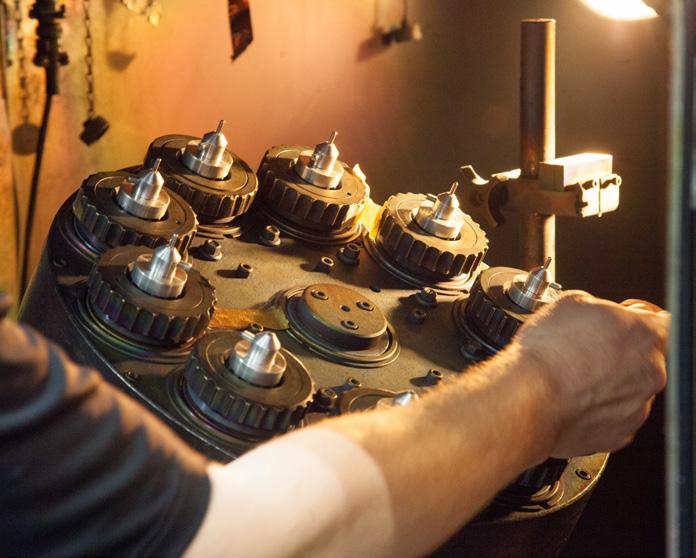

get help from an experienced service provider. The success and quality of the final weldment will depend on it.

Along with the joint design, proper tooling to manipulate the part within the vacuum chamber is critical, not only to hold the part together and in place, but possibly to act as a heat sink to minimize shrinkage and warping by absorbing some of the heat going into the part. Tooling can also be designed to shield and protect exposed wires and sensitive components of the assembly against vapor and weld splatter. Well-designed tooling allows for better efficiency—the more parts that can be welded per vacuum chamber cycle, the more cost-effective the process.
Although technology has evolved, and more modern EB machines have routines and automated processes for set-up, an experienced engineer or operator is required for initial weld development. The electron beam must be generated, focused and aligned at setup according to a weld schedule (log) to produce the desired result. It must also be synchronized with the weld feed rate (typically in a CNC program) to produce the width, depth (penetration), heat, and cosmetic finish on the surface that’s required. Once one cycle is complete and all parts in the chamber are EB welded, the technician or operator unloads the welded parts for inspection and loads in another batch until the desired lot quantity is completed. This points out one clear disadvantage of electron beam welding, and that is the need for a vacuum chamber. With pump down times (the time it takes to achieve a ready-to-weld vacuum) ranging from 30 seconds (small chamber) up to over an hour (large chamber), it is imperative that tool design engineers maximize the number of parts run
30 TITANIUM TODAY
EB Systems Offers on Electron Beam, Laser Beam Welding (continued)
Prepping a vacuum chamber
Tooling for EB welding parts
Laser welded titanium medical parts
The project funded by Innovate UK
Epoch Wires is pleased to announce their involvement in an Innovate UK research project as part of the “NATEP helping SMEs innovate in aerospace - Autumn 2021” competition. The project entitled “NanoTi - Grain refinement of Ti-6Al-4V wire to enable Aerospace DED AM” is led by Epoch Wires and supported by TWI.

The project aims to design novel-alloy wire chemistry to minimise the grain growth in Ti6Al4V alloys deposited by Additive Manufacturing. In this work, Epoch Wires will produce new wires with a nanoparticle injection, forming equiaxed grains to enhance the mechanical properties of Ti6Al4V alloys. TWI will be depositing the wires using laser, plasma, and electron-beam additive manufacturing techniques. Epoch Wires will be utilising it’s proprietary technology of producing metal-cored wires using continuous laser-seam welding technology, designed for titanium alloys.
The NanoTi project has received funding from Innovate UK under grant agreement No. 10030392.
Nano Ti Wires

Innovative and cost-effective titanium wires for the aerospace industry

Laser-seam welded Ti6Al4V wire
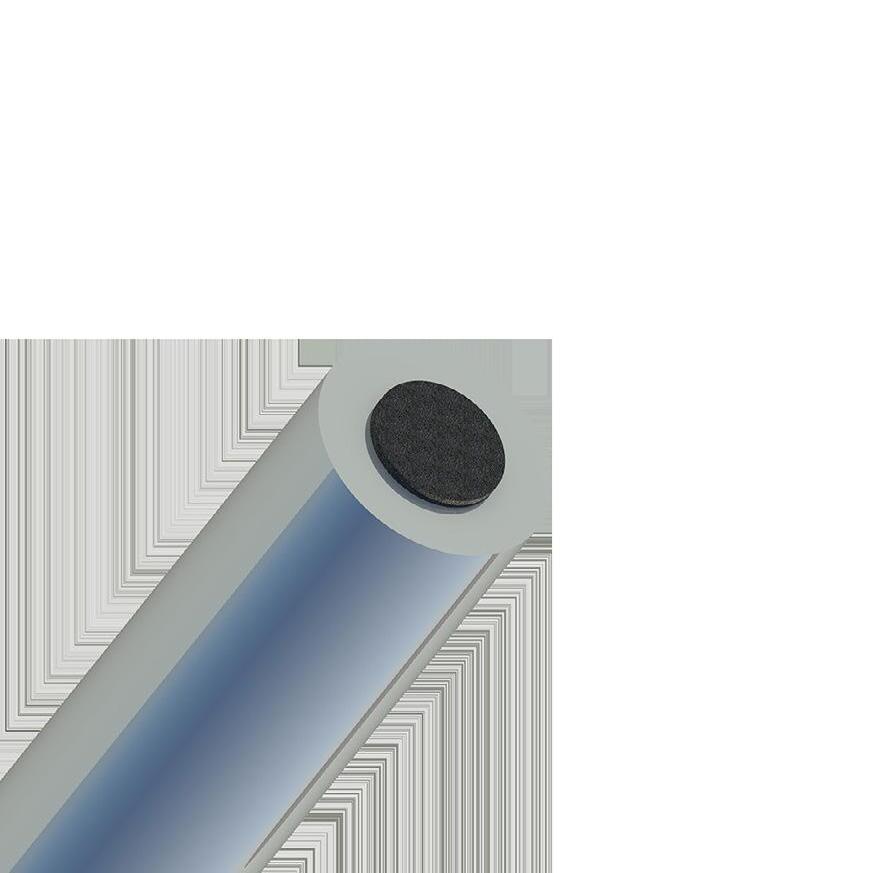


Ti6Al4V material deposited using Nano Ti wires, with laser additive manufacturing technology (image courtesy of TWI)
Contact
Serdar Atamert (CEO)
serdar.atamert@epochwires.com
+44 (0) 7414 866801
Epochwires.com
info@epochwires.com
Unit 8, Burlington Park, Cambridge, CB22 6SA, UK
EB technology is not for the faint of heart. Highvoltage machines can be in the millions of dollars, and the support to keep these machines running can be extensive, especially if you do not have inhouse personnel to keep you up and running when delivery deadlines are hours away. Part designers should have some familiarity with joint design or get help from an experienced service provider. Working closely with an experienced weld or development engineer is extremely helpful. Choosing the right process and the right equipment and service provider to help tool and develop the process is usually the difference between success and failure.
per pump down and that CNC programmers and operators monitor the movement of the parts to save costly time.
EB welding systems can join all weldable metals and some metals that are not typically welded. Electron beam welds are incredibly strong and pure. Impurities in the weld are vaporized, and welding in a vacuum means there are no gases or air that might react and cause oxidation. EB welding is a process of choice to join dissimilar materials that would otherwise be un-weldable due to differences in melting points, which result in intermetallic compounds that cause brittleness. The precise nature of the electron beam and tight heat-affected area allow electron beam welding to melt the lower-temperature material onto the unmelted, higher-temperature material, resulting in a homogenous weld.
Electron beam welding technology has expanded in recent years. EB Industries has developed a new machine that offers several

improvements., such as automatic joint tracking on weld joints that can’t be seen by the human eye. This machine also has parameter monitoring capabilities, including the ability to halt the process if something is out of specification. All of this increases the reliability and consistency of the process. See more information here: https:// ebindustries.com/eb-weldcube-highprecision-eb-welding/.
EB Industries typically opts to electron beam weld titanium rather than using lasers. It’s imperative to keep oxygen away from the weld as Titanium is very susceptible to oxidation, which can result in the weld being brittle and cracking. For this reason, special care must be taken to minimize the weld piece’s exposure to oxygen after cleaning and during welding. Since EB welding happens in a vacuum, there is no oxygen present to cause oxidation. When laser welding titanium, oxidation is mitigated by using a cover or shield gas. Generally, an inert gas, such as argon or helium,
is used to protect the part, and special care must be taken to make sure the gas completely covers the heat-affected area including the back side and/or interior of the part.

Laser Welding
Lasers were developed in the early 1960s, and by the mid-decade, CO2 lasers were being used to weld. The 1970s saw automated laser welding on production lines, and the technology has found wide acceptance in many industries and continues to improve. Laser welding systems are capable of delivering a tremendous amount of energy very quickly and with pinpoint accuracy. The beam can be focused and reflected to target hardto-access welds and can be sent down a fiber-optic cable for more flexibility.
A laser beam is generated by rapidly raising and lowering the energy state of an “optical gain material,” such as a gas or a crystal, which causes the emission of photons. These photons are then concentrated and made coherent (lined up in-phase with each other) and then projected.
32 TITANIUM TODAY
Laser weld fixture with gas nozzles
EB Systems Offers on Electron Beam, Laser Beam Welding (continued)
Titanium Mill Products: Sheet, Plate, Bar,Pipe,Tube,Fittings, Fasteners, Expanded Sheet & Ti Clad Copper or Steel.
Titanium Forgings and Billet: Staged intermediate ingot & billet to deliver swift supply of high quality forgings in all forms and sizes including: rounds, shafts, bars, sleeves, rings, discs, custom shapes, and rectangular blocks.
Titanium, Zirconium, Tantalum & High-Alloy Fabrication & Field Repair Services: Vessels, Columns, Heat Exchangers, Piping, Anodes, Custom Fabrications, Field & In-House Reactive-Metal Welding & Equipment Repair Services Available 24/7.

Plate Heat Exchangers: Plate Heat Exchangers to ASME VIII Div 1 Design, Ports from 1” through 20” with Stainless Steel, Titanium and Special Metals, Plate Heat Exchanger Refurbishing Services & Spare Parts.
Two Service Centers & Fabrication Facilities in Ohio & Texas with Capabilities in: Waterjet, Welding, Machining, Sawing, Plasma Cutting & Forming.
Serving a Wide Variety of Industries: Chemical Processing, Mining, Pulp & Paper, Plating, Aerospace, Power and others.
Ti sheet, plate, bar, & forgings 6/4,6/4ELI, CP Ti, Welding Wire, & Fabrications tricormetals.com astrolite.com tricoralloys.com Tricor Metals, Ohio Division 3225 W. Old Lincoln Way Wooster, Ohio 44691 Phone: 330-264-3299 Fax: 330-264-1181 Tricor Metals, Texas Division 3517 North Loop 336 West Conroe, Texas 77304 Phone: 936-273-2661 Fax: 936-273-2669 Tricor Metals, Michigan Division 44696 Helm St. Plymouth, MI 48170 Phone: 734-454-3485 Fax: 734-454-7110 Astrolite Alloys California Division 201 Bernoulli Circle, Units B & C Oxnard, CA 93030 Phone: 805-487-7131 Fax: 805-487-9694
This beam of photons is focused on the surface of a part and “couples” with the material, causing it to melt via conduction. Since the heating of the material starts on the surface and then flows down into the material, the depth penetration per unit of power in a laser weld is less than that of an EB weld.
The power output of a laser can vary from a few watts to hundreds of kilowatts, and different types of lasers have different welding characteristics. As an example, the wavelength of the light produced by a laser can make it more suitable for some applications and less so for others.
In some cases, the laser’s energy can be reflected by the surface of the material, which reduces its effectiveness. To overcome this problem, the laser can be pulsed— varying the power of the laser over time during the weld cycle. By pulsing the laser at high peak powers, the average power can be a fraction of the peak power and the part stays cool, and on highly reflective materials, such as copper and aluminum, the pulsing “breaks” the surface and allows proper coupling.
The alternative to a pulsed laser is continuous wave (CW). As the name implies, CW lasers utilize a laser beam that is on continuously— from the start to the end of the weld cycle. CW lasers are useful for cutting applications or when weld speed is important. For example, an automated GTAW machine might have a welding speed of 10 inches per minute (IPM), while a CW laser could easily run at 100 IPM. When laser welding, high feed rates for CW are necessary to keep the part cool, so heat-sensitive parts are often pulse welded.
Excessive heat can be an issue when welding with lasers, and pulsed laser welding is generally
called out for welding electronics packages, particularly those that require hermetic sealing. Minimal heat means the weld can occur extremely close to sensitive electronic components and solder joints without melting them. Lasers are also popular for medical device applications, as the welds can be tightly controlled and consistently applied, which leads to minimal discoloration of the part and a cosmetically appealing weld that may not need post machining
Laser welding generally requires the use of a cover gas to keep oxygen out of the weld area and improve efficiency and weld purity by minimizing oxidation. The type of gas used depends on the type of laser, the material being welded and the particular application.
Cover gasses in a laser welding application are generally applied using adjustable nozzles, but some applications may require a glove box to assure complete gas coverage of parts with complex geometries. Work has been done with laser welding in a vacuum. This has yielded some positive results, but the cost and complexity of such a system steer many back to the EB welding process, where a vacuum is a requirement of the process.
Which Process to Use?
Which process to use depends on the particularities of the application. EB welding was an accepted process in the aerospace industry before lasers were available. As a result, the specifications for EB welding for aerospace parts are extensive and widely accepted. These specifications control all aspects of the process, including joint design, cleaning, vacuum requirements, machine qualification, operator training and inspection criteria. Electron beam welding of titanium for aerospace and
defense applications is a very good fit.
The medical device field has embraced laser welding. Although there are much fewer standard medical device welding specifications, large OEMs usually define their own. Without the requirement for a vacuum, laser welding is generally less expensive than EB welding, and the parts are easier to tool and fixture without the limitations of a vacuum chamber. Laser welding titanium in glove box environments produces excellent, high-quality welds.
Some applications and part designs have specific requirements that will dictate the process to use. Working closely with an experienced weld or development engineer is extremely helpful. Choosing the right service provider can be a key factor in getting excellent welds that fit the requirement in a cost-effective manner.
Profile of EB Industries
Founded in 1965, EB Industries (website: www.ebindustries.com) has extensive experience in the precision welding of industrial metals (titanium, molybdenum, beryllium, copper, stainless steel and more), specializing in EB and laser technologies. The company’s certifications include AS9100D/ISO 9001:2015, ISO 13485:2016 as well as NADCAP (National Aerospace and Defense Contractors Accreditation Program) certification for EB welding. EB Industries provides services to OEMs as well as Tier 1 and 2 suppliers in aerospace and defense, medical, semiconductor and alternative energy business sectors. EB Industries performs welding as a service and doesn’t sell or license any of its machines. For more information, visit the company’s website, https://ebindustries.com. n

34 TITANIUM TODAY
EB
(continued)
Systems Offers on Electron Beam, Laser Beam Welding


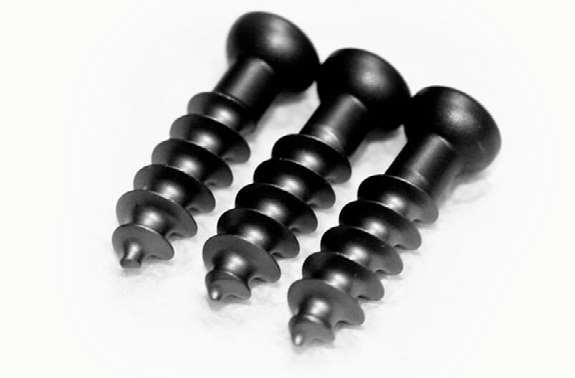
IperionX Unveils Mission to Develop First 100-Percent U.S. Titanium Recycling Plant
By Michael C. Gabriele

IperionX Ltd. (previously known as Hyperion Metals Ltd.), a critical materials company focused on the sustainable reshoring of critical material supply chains to the U.S., recently published additional details regarding its near-term plans to develop the first 100-percent recycled titanium metal production facility in the United States.
The project will roll out in two initial phases, with Phase 1 consisting of a $28.4 million capital investment to develop annual capacity of 125 metric tons of 100-percent recycled titanium metal powders by 2024, followed by an expansion in Phase 2 to 1,125 metric tons of recycled powder capacity by 2026. Both phases will produce high-quality titanium metal powders entirely from scrap metal feedstock. Final engineering and design for Phase 1 is nearly complete and commissioning for the facility is targeted for the first quarter of 2024. The company trades on both the Australian Stock Exchange and the NASDAQ, and recently completed an A$20 million (US$14 million) financing accord to progress Phase 1 development.
IperionX plans to develop Phase 1 of the project as a “titanium demonstration facility” to demonstrate the company’s titanium metal processing technology capabilities at larger scale, and to provide a larger volume titanium metal powder samples to interested potential customers across a range of industries. According to a company statement, IperionX will occupy an existing 50,000-square-foot shell
building in the Southern Virginia Technology Park and plans to expand the facility to 100,000 square feet in the coming years. IperionX will source 100-percent renewable energy to produce recycled titanium to supply advanced industries including automotive and transportation, defense and aerospace, electric vehicles, consumer products and electronics, and 3D printing.

Anastasios

Arima, IperionX founder and chief executive officer, explained that a major thrust for the Virginia plant will be the utilization of the company’s two complementary technologies: the Hydrogen Assisted Magnesiotheric Reduction (HAMR) process and Granulation Sintering Deoxygenation (GSD). Arima said HAMR “is a low

energy, low carbon method to create titanium metal powders. The GSD process leverages the HAMR technology’s superior deoxygenation capabilities to produce spherical powder for additive manufacturing/3D printing applications. The GSD technology is synergistic to HAMR in that it adds a further, very high value, set of applications to this breakthrough titanium deoxygenation technology.”
As detailed on the company’s website (https://iperionx.com/), metallurgist and University of Utah professor Dr. Zak Fang developed the
patented HAMR power metallurgy process technology with funding from the U.S. Department of Energy’s ARPA-E program. The
36 TITANIUM TODAY
Anastasios “Taso” Arima, chief executive officer and founder of IperionX.
IperionX’s industrial building in Halifax County, VA, where the company plans to develop titanium powder production capacity in 2025


HAMR process greatly facilitates the deoxygenation of high-oxygen titanium. It can accept almost any form of titanium metal or scrap feedstock, including high-oxygen scrap that would otherwise be landfilled, and produces low-oxygen titanium powders with lower energy intensity and carbon emissions than the industry standard Kroll process, thereby enabling a low-cost, low-to-net-zero carbon emission, circular titanium supply chain.
The majority of HAMR’s energy and emissions savings are achieved by eliminating the Kroll Process’ need to chlorinate TiO2 to make TiCl4 as an intermediate step, and removing the need for vacuum distillation after the reduction of TiCl4. Post deoxygenation, HAMR process then uses conventional powder metallurgy processing steps to control the size of the particles, add alloying elements, and ensure that the result is high-quality titanium powder.
Regarding a timeline for commercial production of titanium powder using the HAMR/GSD technologies, Arima noted that IperionX has “an operational titanium metal powder pilot production facility in Salt Lake City, currently producing titanium for qualification of commercial applications with prospective customers, and has publicly stated ambitions to construct and commission the titanium demonstration facility in Virginia over the coming 12 months.”
IperionX is already selling titanium metal products into the luxury consumer goods sector in the form of additively manufactured watch cases via its partnership with Officine Panerai, a subsidiary of Compagnie Financière Richemont, the maker of IWC watches. The company has also recently announced a partnership with Canyon Bicycles GmbH to produce bicycle components using IperionX’s 100-percent recycled and low-carbon titanium, as well as a partnership with Carver Pump to produce titanium pump components for the U.S. Navy.
In January, IperionX won the Air Force Research Laboratory’s Grand Challenge, marking the company’s selection as the most commercially promising technology for producing titanium metal powders from scrap titanium. In addition to these commercial

IperionX Looks to ‘Accelerate’ Its HAMR, GSD technologies

Two years ago, TITANIUM TODAY reported on the agreement between Hyperion Metals Ltd. (now IperionX) and Blacksand Technology LLC for the commercial development of low-cost spherical titanium metal powders needed for additive manufacturing. IperionX, through its agreement with Blacksand, secured the exclusive rights to the patented GSD technology developed by Dr. Fang, to supplement its breakthrough HAMR technology. In addition, IperionX established a memorandum of understanding with EOS GmbH of Germany to “accelerate the deployment of IperionX’s HAMR and GSD technologies.”
At the time, IperionX executives said GSD offers major advantages in the production of spherical titanium powder, such as:
Production of titanium and titanium alloy powders with low oxygen, controllable particle size and excellent flowability
Higher manufacturing yields than current processes, leading to significantly lower costs Energy efficient process leading to a netzero carbon process when coupled with renewable power
Ability to utilize lower cost and sustainable feedstocks including recycled titanium metal powders/scrap or HAMR titanium powders. GSD is a thermochemical process for producing spherical titanium powders used in 3D printing and additive manufacturing, invented by Dr. Fang and his team at the University of Utah. The GSD technology significantly improves the yield, by up to 50 percent, and produces a spherical powder with low oxygen, controllable particle size and excellent flowability. The GSD manufacturing process steps are:
• Titanium metal or alloy is hydrogenated to make friable hydride and is then milled into fine particles
• The fine hydride particles are granulated into spherical granules in the desired size
38 TITANIUM TODAY IperionX Mission to Develop First 100% U.S.
(continued)
Titanium Recycling Plant
Deoxygenation furnace at IperionX’s operations in Utah.
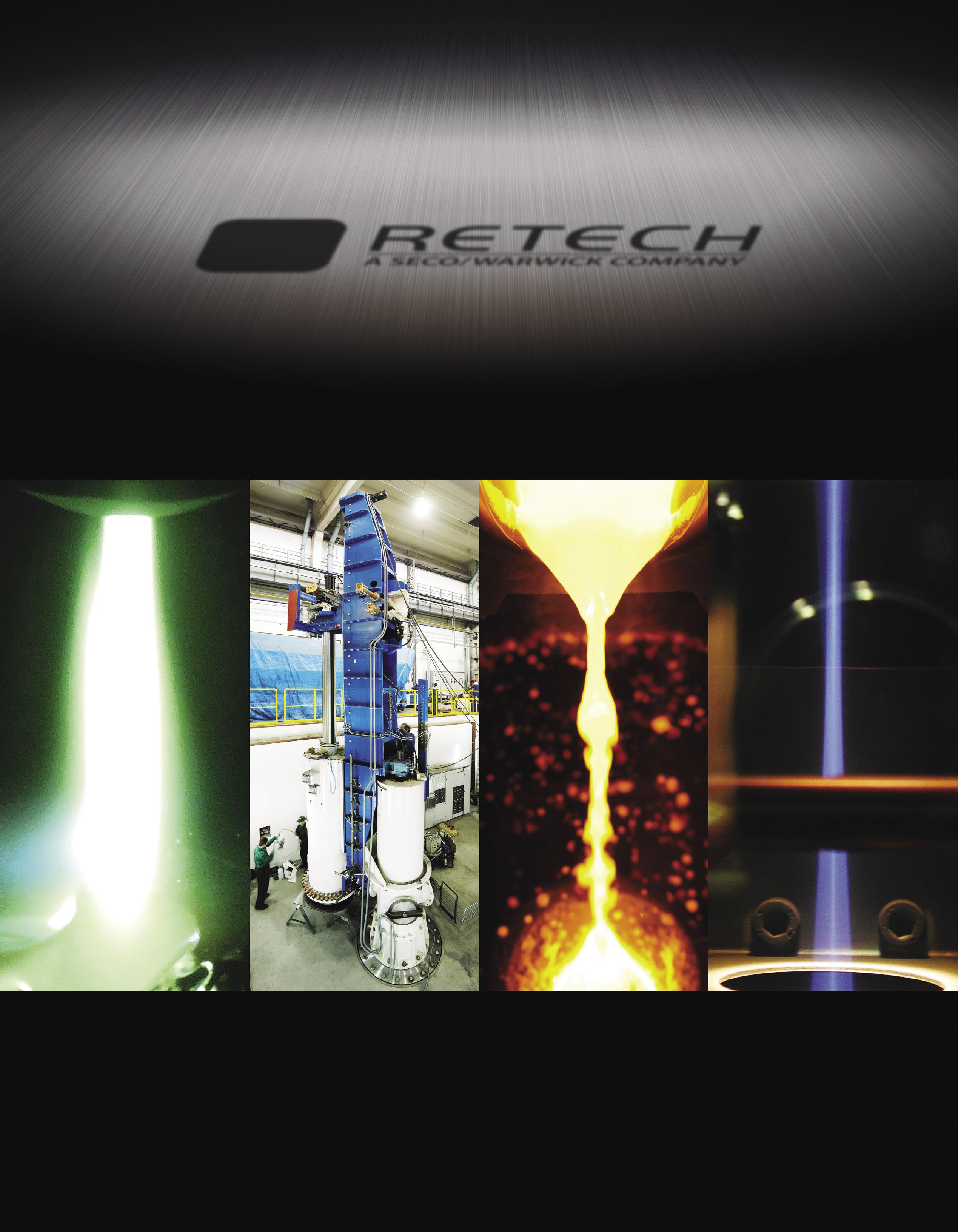


Plasma Arc • Electron Beam • Cold Wall Induction • Vacuum Arc Remelting • Atomization US: +1 (716) 463-6400 EU: +48 68 38 20 500 www.retechsystemsllc.com Your Global Leader for Titanium Melting Technologies
applications in the luxury goods, consumer products, and defense sectors, other target applications would include using additive manufactured titanium parts as a cost-effective substitution for industrial applications using stainless steel, along with components anticipated for weight reduction in electric vehicles.
Arima said that establishing the Virginia facility is “a critical step in advancing IperionX’s ambition to reshore an all-American, sustainable source of titanium metal,” noting that “over the last 25 years the United States has transitioned from being among the largest global producers of primary titanium metal (in the form of titanium sponge) to now having no commercial production, and is almost solely reliant on imports, primarily from Japan, to supply its substantial downstream industry.”

In the future, IperionX aims to integrate its titanium processing technologies with high-quality titanium mineral supply from its
“Titan” critical mineral project, an 11,000-acre site in near Camden, TN. According to IperionX, the Titan site and mineral deposit contains rare-earth and titanium minerals and zircon-rich mineral sands. The project benefits from road, rail and water logistics connecting it to manufacturing industries and customers. “The shallow, high grade and unconsolidated nature of the sandy mineralization enables the potential for simple mining operations such as dozer push followed by an industry standard mineral processing flowsheet.”
In February 2022 Hyperion Metals changed its name to IperionX, but retains a head office in Charlotte, NC, industrial pilot facility operations in Salt Lake City, a local office in Camden TN, and will be building commercial-scale titanium production capacity in Halifax County, VA.
The company’s mission, as stated on its website, is “to be a leading developer of US-based sustainable

range using spray drying
• The spherical granules are sintered to produce densified spherical titanium powder
• The densified spherical titanium powder is deoxygenated with magnesium to reduce the oxygen content to product specifications
The GSD technology also can introduce desirable alloying ingredients with the titanium hydride powder made in step one to make titanium alloys. For example, titanium hydride powder can be blended with aluminum and vanadium powders to create the widely used alloy Ti-6Al-4V. Other alloying elements for titanium include iron, niobium, zirconium and molybdenum.
The combination of producing titanium metal via the HAMR deoxygenation process followed by the production of titanium spherical powders via the GSD process has the potential to substantially reduce the total cost of titanium powders for additive manufacturing, opening up many potential new markets. Producing spherical powders from titanium and titanium alloys is a critical building block for the rapidly growing, industrial scale, 3D printing/additive manufacturing. The high cost of titanium spherical powders historically has curtailed its use in additive manufacturing for products that require its superior properties of strength-to-weight ratio, corrosion resistance and biocompatibility. Alternative commercial processes for producing titanium spherical powders include gas atomization, plasma atomization and the plasma rotating electrode process. n
40 TITANIUM TODAY
IperionX
Develop First 100% U.S.
IperionX’s Mineral Demonstration Facility at its wholly owned Titan critical minerals project in Tennessee, where the company produces a heavy mineral concentrate product from its nearby mineral deposits
Mission to
Titanium Recycling Plant (continued)
Rapid Response. Dependable Delivery.
Exceptional Turnaround From a Proven Partner in Titanium Materials Testing




Product Evaluation Systems, Inc. (PES) is a fully accredited, independent leader in titanium materials testing for aerospace and other applications. With a dedicated, experienced staff and state-of-the-art testing facilities, we offer full-service capabilities for all of your titanium testing needs, including:
• Mechanical Testing
• Metallurgical Analysis
• Chemical Analysis
PES responds to your needs promptly with personal service, customized solutions and expedient turnaround. We work with clients throughout the United States and Europe on projects of all types and sizes.
To request a free quote for your titanium testing needs and to see a full list of capabilities, please visit our website at www.PES-Testing.com or call 724-834-8848.
critical mineral and critical material supply chains, to facilitate the global transition towards a closed-loop, low-to-net-zero carbon, resource efficient and socially inclusive green economy—beginning with titanium. We aim to create a new, selfsustaining global supply chain that will enable manufacturers around the world to better incorporate scrap recycling and raw materials in a cleaner, resource-efficient, closed-loop system. This will enable the potential for longer product lifetimes and increased product reusability, help industry meet and exceed compliance standards and reduce carbon footprints.” n
The company’s mission is to be a leading developer of US-based sustainable critical mineral and critical material supply chains, to facilitate the global transition towards a closed-loop, low-to-net-zero carbon, resource efficient and socially inclusive green economy—beginning with titanium. ‘We aim to create a new, self-sustaining global supply chain that will enable manufacturers around the world to better incorporate scrap recycling and raw materials in a cleaner, resource-efficient, closed-loop system.’


42 TITANIUM TODAY
Pictured are 3D printed watch blanks, produced from IperionX’s 100-percent recycled titanium at its industrial pilot facility in Utah, for partner Panerai
IperionX Mission to Develop First 100% U.S.
(continued)
Titanium Recycling Plant
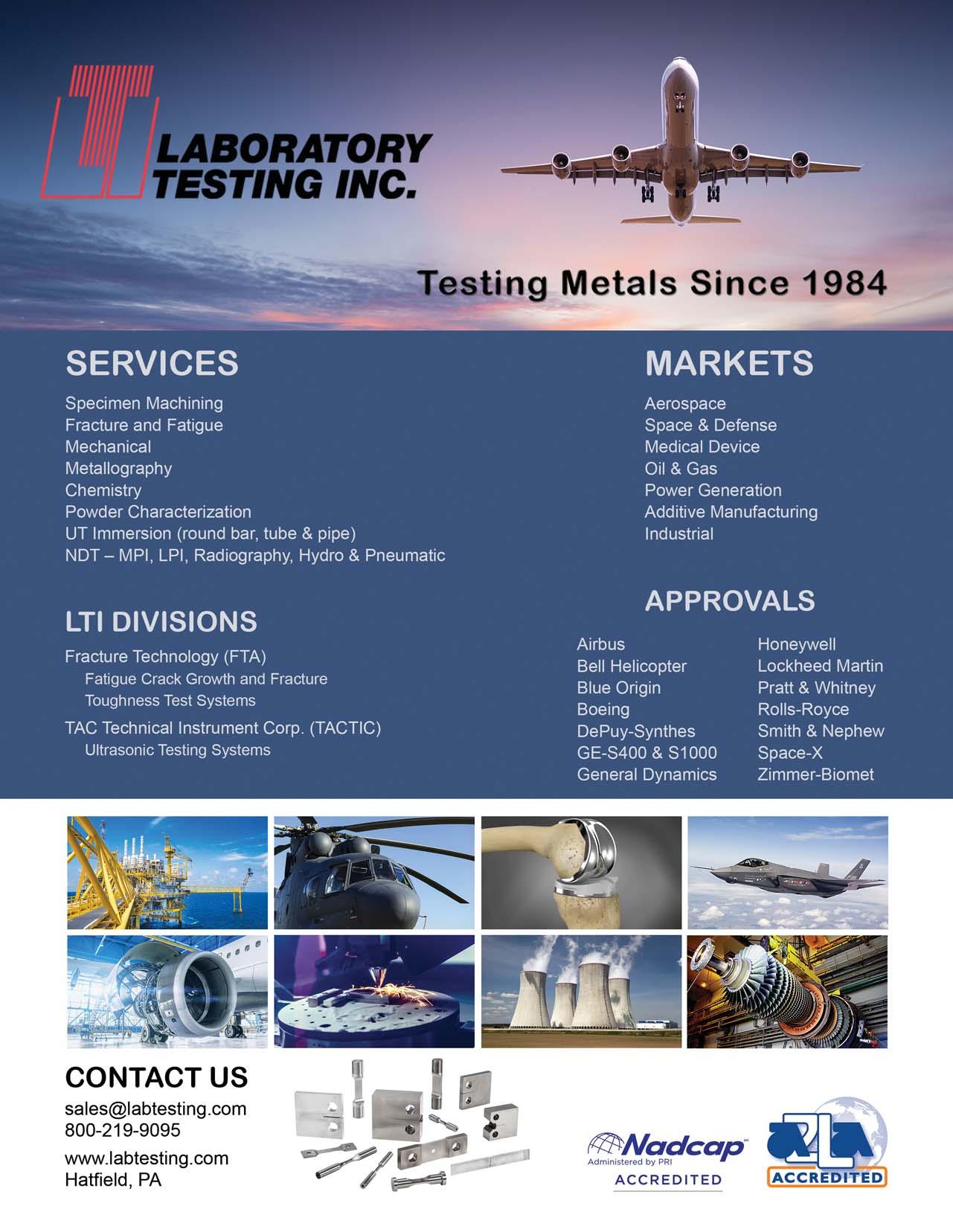
New Orders for Wide-Body Boeing 787s, Airbus A350s Signal Encouraging Prospects for Aerospace Business
By Michael C. Gabriele
Multi-billion dollar orders for Boeing and Airbus jets announced in the first quarter provide hope that the titanium supply chain and the global aerospace industry—still in a cautious recovery mode following the two-plus years of Covid pandemic shutdowns—can anticipate brighter days for business on the horizon.
Trusted international news sources, such as the Wall Street Journal, the New York Times, the Associated Press, Reuters, Forbes, and the Financial Times, all reported on the various mega deals. Air India ordered 220 jets from Boeing and 250 planes from Airbus, bookings that are likely to total about $70 billion. The Associate Press indicated that the Boeing order includes 190 737 MAX aircraft, 20 of its 787s, 10 of its 777Xs, along with customer options for an additional 50 737 MAXs and 20 of its 787s. The Airbus order involves the purchase of 40 wide-body A350 Airbus aircraft and 210 narrow-body A320neo planes.
The New York Times offered
market insight, writing that the jets will be needed to support the booming travel market in Asia, as the Indian government is planning to build 80 new airports over the next five years.
Reuters reported that two Saudi Arabia airlines, Saudia Airlines and Riyadh Air, have booked a combined 78 Boeing 787 wide-body Dreamliners, a $37-billion deal, with options to buy an addition 43 Dreamliners. The New York Times revealed that Saudia would receive the 787-9 planes while Riyadh is buying 787-10 planes. Reuters also reported in March that Taiwan’s Eva Airways Corp. will purchase five Boeing 787s, a sale worth $1.78 billion. The report said Eva Airways “currently operates 10 Boeing 787 aircraft.”
United Airlines, in a transaction announced in late 2022, ordered 100 Boeing wide-body 787s, plus an option to buy another 100 787s. The Financial Times, in a Dec. 13, 2022 online article, described the booking as the “largest order for wide-body planes ever placed by a U.S. carrier,”
adding that new 787s will replace the Boeing 767s and 777s that United currently flies, improving fuel efficiency by 25 percent. “United will receive the first jets in 2024 and take delivery through 2032.”
Separately, United Airlines, in 2021, ordered 200 single-aisle Boeing MAX aircraft and 70 Airbus A321neos.
Airbus posted a story on March 2 on its newsroom website that Lufthansa Group has signed an agreement with Airbus to expand its fleet by 10 Airbus A350-1000s and five Airbus A350-900s. The Airbus A350 and Boeing 787 are competitors on the wide-body commercial aerospace market.

Boeing 787 Gains Altitude


Richard Aboulafia, the managing director of AeroDynamic Advisory LLC, Ann Arbor, MI, and a respected aerospace analyst in the titanium industry, weighed in on the orders for Boeing’s 787. “This is good news for the wide body sector, and it certainly means that the situation is improving
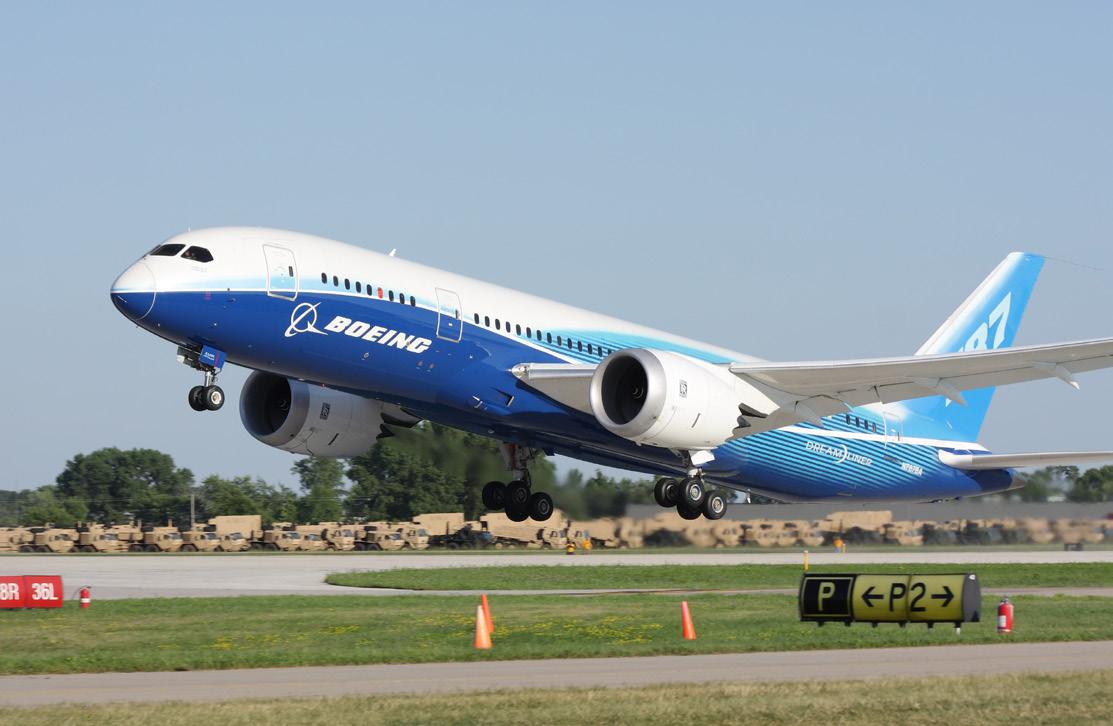
44 TITANIUM TODAY
SYSTEMS FOR AVIATION INDUSTRIES
SYSTEMS FOR AVIATION INDUSTRIES



NEAR NET SHAPE TECHNOLOGY COATING SYSTEMS
CASTING SYSTEMS
� Leicomelt with Cold Crucible
� VAR Skull Melting

HOT ISOTHERMAL FORGING (HIF)
METAL ADDITIVE MANUFACTURING

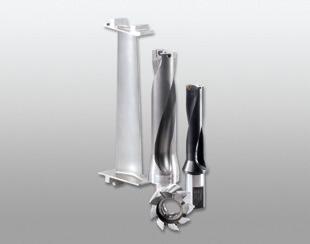


� EIGA: Ceramicfree Metal Powder Production



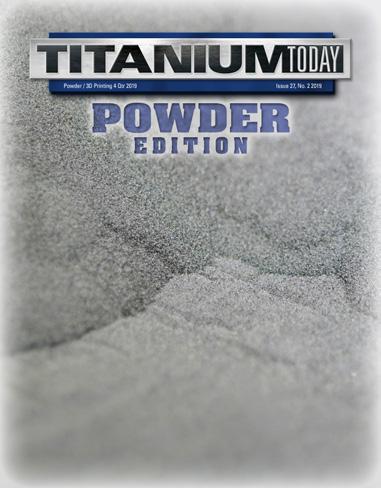





� VIGA: Inert Gas

� EB-PVD SYSTEMS
Electron Beam Physical Vapour Deposition

� EB-PVD SYSTEMS Electron Beam Physical Vapour Deposition (EB-PVD) of Thermal Barrier Coatings (TBC)

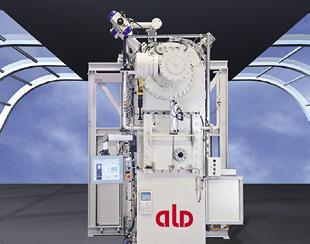
HEAT TREATMENT SYSTEMS

� SYNCROTHERM®
Total Integration of Heat Treatment into Component Manufacturing



TITANIUM TODAY 45
SYSTEMS
VIM Master Melting
VAR
ESR
EB Melting � PA Melting
CASTING SYSTEMS � VIM-IC
Leicomelt with
Crucible
VAR Skull Melting HOT ISOTHERMAL FORGING (HIF) METAL ADDITIVE MANUFACTURING
EIGA:
Metal Powder Production
VIGA:
Gas Atomization Equipment
MELTING
�
�
�
�
HEAT TREATMENT SYSTEMS � SYNCROTHERM® Total Integration of Heat Treatment into Component Manufacturing
�
Cold
�
�
Ceramicfree
�
Inert
NEAR NET SHAPE TECHNOLOGY COATING SYSTEMS
Courtesy of SLM Solutions ALD Vacuum Technologies GmbH Otto-von-Guericke-Platz 1 | 63457 Hanau, Germany T: +49 6181 307-0 | info@ald-vt.de ALD Vacuum Technologies North America, Inc. 18 Thompson Road | East Windsor, CT 06088, USA T: +1 860 386 7227 | info@ald-usa.com
www.ald-vt.com www.ald-usa.com
ALD Vacuum Technologies High Tech is our Business
MELTING SYSTEMS � VIM Master Melting � VAR � ESR � EB
Melting
� PA Melting
� VIM-IC
Atomization Equipment
(EB-PVD) of Thermal Barrier Coatings (TBC) Courtesy of SLM Solutions ALD Vacuum Technologies GmbH Otto-von-Guericke-Platz 1 | 63457 Hanau, Germany T: +49 6181 307-0 | info@ald-vt.de ALD Vacuum Technologies North America, Inc. 18 Thompson Road | East Windsor, CT 06088, USA T: +1 860 386 7227 | info@ald-usa.com ALD Vacuum Technologies High Tech is our Business www.ald-vt.com www.ald-usa.com VACUUM SYSTEMS AND TECHNOLOGIES FOR METALLURGY AND HEAT TREATMENT PAM Melting CVD SYSTEMS Chemical Vapor Deposition for non metallurgy applications METAL POWDER PRODUCTION International Titanium Association www.titanium.org 1-303-404-2221 Telephone 1-303-404-9111 Facsimile ita@titanium.org Email BY ADVERTISING IN TITANIUM TODAY you connect with a specific target market unlike any other. Each edition includes: Member Profiles, Timely Editorial, Advertising opportunities, Press Releases, Classified Ads, Calendar Events, Executive Summaries from Titanium Conferences As an ITA member, you have the opportunity to submit press releases, classified ads, and host your updated company profile in the trade publication all INCLUDED in your annual membership .
from the disasters of 2020 and 2021. International traffic continues to improve, too, but it’s important to keep perspective here. United’s 787 order, while big, will see deliveries take place throughout the decade. During the great pre-2020 wide-body bull market, 787 output peaked at 14 per month. So, United’s vaunted order represents just around 7 months of peak production.” Aboulafia did acknowledge that the 787 bookings represent “very good news for titanium.”
Separately, Aboulafia, quoted in a March 14 Reuters online article, said Boeing’s success in the recent bookings for the two Saudi Arabian airlines could partially be due to “a greater U.S. presence in the region— politically, diplomatically, and economically.” He added however that “it’s also quite likely that the 787 is just closer to their requirements right now.” In particular, he said the 787 allows for a more flexible route network, as it’s smaller than the Airbus A350 but with equivalent range. “That’s probably a big factor in it,” Aboulafia said.
Aboulafia joined AeroDynamic Advisory in January 2022, having previously served as the vice president of analysis at Teal Group. He’s widely quoted and writes articles on the aerospace industry for many business publications.
Boeing’s 787 jet has long been identified as a “titanium-intensive” commercial aerospace platform, but how “intensive” is it? Titanium is a material of choice for the jet, in large part, due to its compatibility with the plane’s abundant use of composite materials. Various sources and analysts, including Aboulafia, typically estimate that titanium represents 15 percent of the weight of a 787. But this estimate is opaque, considering the various ways to
calculate the weight of a Boeing 787: what platform model?; maximum take-off weight?; structural weight?; operating empty weight? For this article, using the category of “maximum take-off weight of a 7879 Dreamliner,” provided by several online sources, titanium accounts for 84,000 pounds, or 38 metric tons for each aircraft (15 percent of 560,000 pounds). This reporter calculated the estimate, based on the overall figures given for the plane.

Upbeat Outlook for Global Aerospace Market
The titanium industry can take heart that business conditions this year for the global aerospace market continue their ascent, in the wake of the dark days of the Covid-19 pandemic. The Montrealbased International Air Transport Association (IATA) (website: www. iata.org) announced that the anticipated recovery in air travel demand is continuing in 2023, based on January traffic results, according to a press release issued on March 8. The year-over-year percentage increases represent a stark contrast to business downturn during the pandemic period.
Total traffic in January 2023 (measured in revenue passenger kilometers or RPKs) rose 67 percent compared to January 2022. “Globally, traffic is now at 84.2 percent of January 2019 levels.” Domestic (North American) traffic for January 2023 rose 32.7 percent compared to the year-ago period, helped by the lifting of the zero-COVID policy in China. Total January 2023 domestic traffic was at 97.4 percent of the January 2019 level. International traffic climbed 104 percent versus January 2022 with all markets recording strong growth, led by carriers in the Asia-Pacific region. International
RPKs reached 77 percent of January 2019 levels.
For the titanium industry, the large percentage increases are a reassuring sign that the aerospace sector is in a full-recovery mode, which would translate into an uptick in new jet bookings as well as forward movement on order backlogs, which in turn would generate titanium demand.
“Air travel demand is off to a very healthy start in 2023, Willie Walsh, IATA director general observed, quoted in the press release. “The rapid removal of COVID-19 restrictions for Chinese domestic and international travel bodes well for the continued strong industry recovery from the pandemic throughout the year. And, importantly, we have not seen the many economic and geopolitical uncertainties of the day dampening demand for travel.” Walsh surmised that “with strong travel demand continuing through the traditionally slower winter season in the Northern Hemisphere, the stage is set for an even busier spring and summer.”
Last December, the IATA issued its annual business forecast for the global commercial aerospace industry, saying it expects a return to profitability as airlines continue to cut losses stemming from the effects of the COVID-19 pandemic to their business in 2022. The numbers the organization reported for January fall in line with that outlook. “In 2023, airlines are expected to post a small net profit of $4.7 billion—a 0.6 percent net profit margin,” the press release stated. “It is the first profit since 2019 when industry net profits were $26.4 billion (3.1 percent net profit margin). In 2022, airline net losses were expected to be $6.9 billion. This is significantly better than losses of $42 billion and $137.7 billion that were realized in 2021 and 2020
46 TITANIUM TODAY
New Orders for Wide-Body Boeing 787s, Airbus A350s Encouraging for Business (continued)
ALPHA RESOURCES™
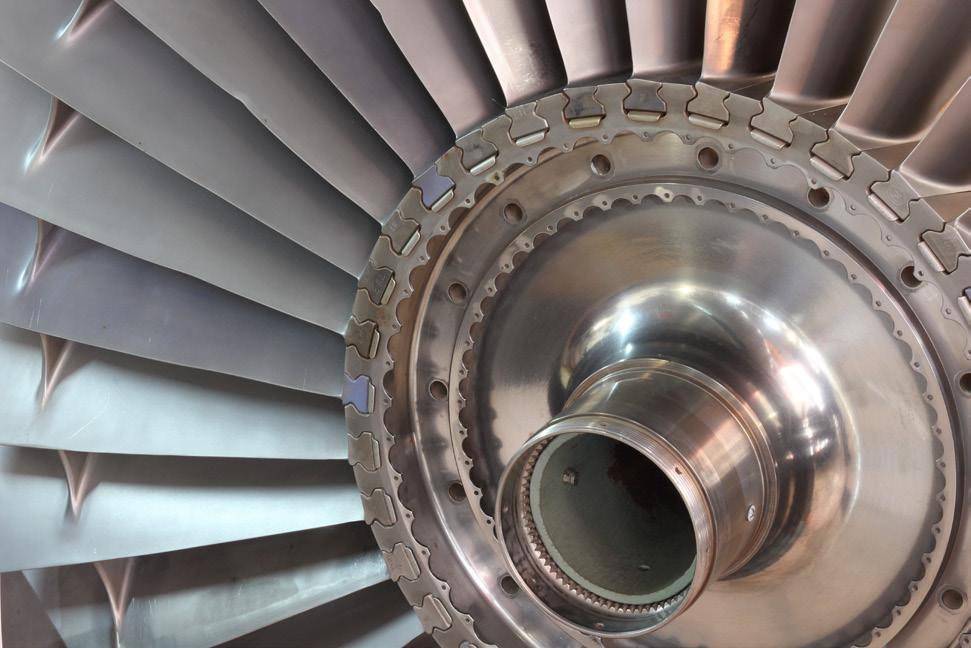
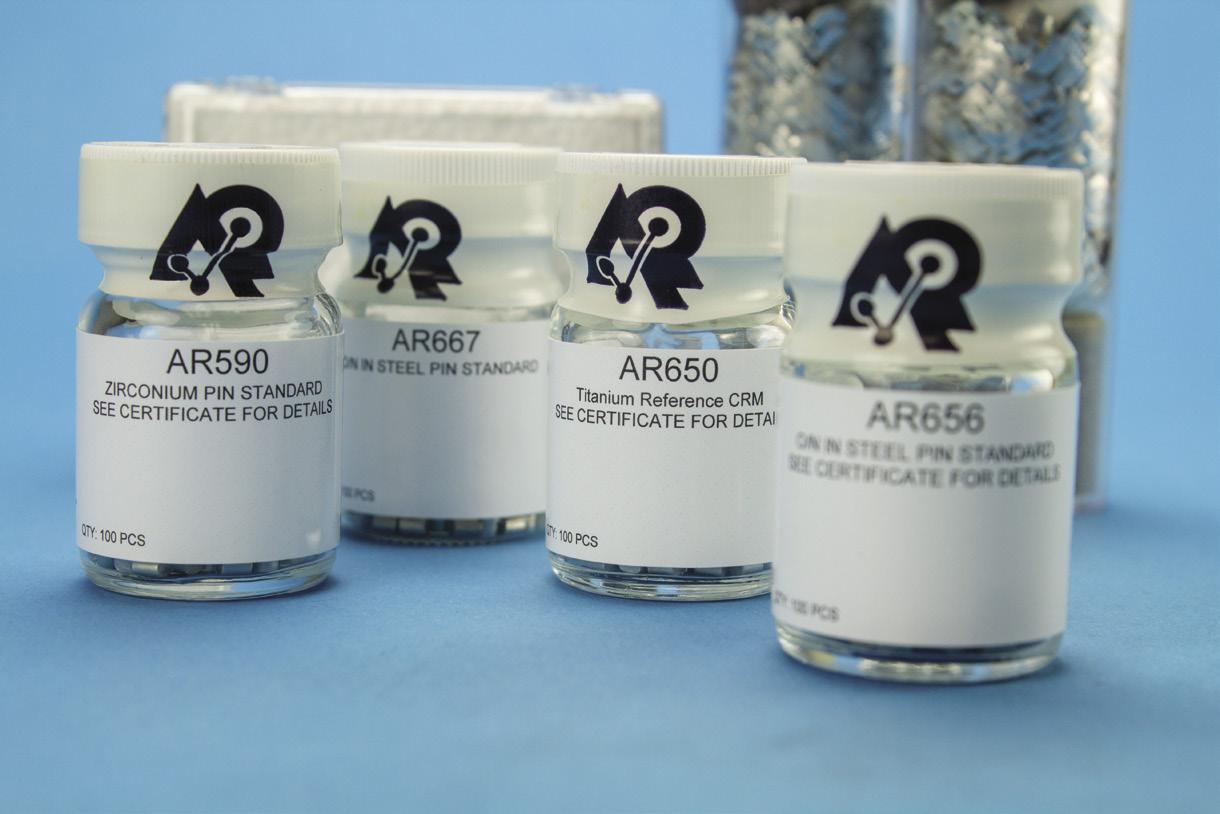


respectively.”
Founded in 1945, the IATA is a trade association representing 300 international airlines and 83 percent of total global commercial air traffic.
Supply Chain ‘Concentrated Risk’
Deloitte Touche Tohmatsu Ltd., London and New York, the giant professional international business firms, which provides consulting, auditing, and financial and risk advisory services, issued its 2023 aerospace and defense industry outlook (https://www2.deloitte.com/ content/dam/Deloitte/it/Documents/ public-sector/2023-outlookaerospace-and-defense-deloitte.pdf ). One topic in the report focused on “supply chain visibility and resilience mitigates broader set of risks The Covid-19 pandemic, workforce shortages, and, most recently, the invasion have exacerbated supply chain complexity for the aerospace and defense industry. Deloitte’s analysis suggests that 90 percent of surveyed manufacturing executives have experienced an increased frequency of disruptions.”
As a result, the Deloitte report indicated that industry players across the value chain are “building resilient supply chains to mitigate risk and drive long-term growth. The aerospace and defense supply chain with multiple tiers of suppliers is very complex. An average American commercial aerospace company has more than 12,000 tier-2 suppliers. This creates unique challenges, such as a lack of visibility beyond tier-1 suppliers. The ongoing disruption is affecting the industry’s manufacturing plans by raising costs and increasing the shortage of
Richard Aboulafia acknowledged that the Boeing 787 bookings represent good news for titanium industry, ‘but it’s important to keep perspective here. United’s 787 order will see deliveries take place throughout the decade. During the great pre-2020 wide-body bull market, 787 output peaked at 14 per month. So, United’s vaunted order represents just around 7 months of peak production.’
materials and components. Supply chain issues for aircraft engines have hampered aircraft delivery plans.”
Deloitte forecasts that 2023 “will likely see an acceleration of the shift from global to regional sourcing, including the exchange of raw materials, parts, and finished aerospace and defense goods globally. Companies will likely emphasize supply chain diversification, including local sourcing and nearshoring, to avoid concentration risk.”

Airbus Expands in China
Airbus, in a story posted April 6 on its online newsroom, reported the European aerospace giant had reached an agreement to expand its existing facility in Tianjin, China, for final assembly operations of the Airbus A320 jet. The agreement will involve a second A320 assembly line at the Tianjin site and would “contribute to Airbus’ overall rate objective of 75 aircraft per month in 2026 throughout its global production network.”
The newsroom story went on to report that Airbus also had signed General Terms of Agreement (GTA) with the China Aviation Supplies Holding Company (CAS)
“covering the purchase of 160 Airbus commercial aircraft. The GTA comprises earlier announcements for 150 A320 Family aircraft and for 10 A350-900 wide-body aircraft orders, reflecting the strong demand in all market segments by Chinese carriers. Over the next 20 years, China’s air traffic is forecast to grow at 5.3 percent annually, significantly faster than the world average of 3.6 percent.”
The New York Times, on April 6, also reported on the accord, reporting that “the agreement was signed in Beijing by Airbus’s chief executive, Guillaume Faury, who was part of an economic delegation accompanying President Emmanuel Macron of France and President Ursula von der Leyen of the European Union. Airbus is working to expand production of its best-selling A320 single-aisle jet, and bolster sales in China.” The Times report pointed out that this agreement was part of Airbus’ ongoing activity in the Chinese market, which began in 1985. “By the end of the first quarter of 2023, the Airbus fleet in China has risen to over 2,100 aircraft, representing more than half the market.” n
48 TITANIUM TODAY
New Orders for Wide-Body Boeing 787s, Airbus A350s Encouraging for Business (continued)
The solutions we create provide value to your business
ARIES Manufacturing is dedicated to the supply of complex airframe structure components, in both titanium and aluminum alloys, to leading manufacturers in the aerospace industry.


ARIES Manufacturing is part of the ARIES Alliance, a group of companies focused on developing innovative technology that creates value for the aerospace industry.

Superplastic Forming and Hot Forming for titanium airplane structural and engine components Panel mechanical pocket milling, drilling and trimming HSF® process technology for titanium airframe components Design vupar.fr ACB Part production facility Nantes - France +33 (0)2 51 13 84 00 DUFIEUX Part production facility Grenoble - France +33 (0)4 76 09 67 44 CYRIL BATH Part production facility Monroe - NC USA +704 289 8531 sales@aries-manufacturing.com wwww.aries-manufacturing.com
News Analysis
India Gains Momentum as Emerging Force In Global Aerospace, Titanium Industries
By Michael C. Gabriele
Is the Republic of India poised to become the next major force in the global aerospace and titanium industries?
The giant Asian subcontinent has methodically built an industrial infrastructure to position itself as

an up-and-coming player in the aerospace and titanium sectors. For the international titanium industry, India’s rise could present business opportunities for sponge and metal production as well as potential partnerships to manufacture titanium
components.

India made headlines earlier this year due to large bookings of commercial aerospace jets and a spacecraft that reached lunar orbit (see below), but perhaps the most significant development occurred earlier this year when the aerospace unit of General Electric signed an accord with state-owned Hindustan Aeronautics Ltd. (HAL) to manufacture jet engines for the Indian Air Force.

GE’s F414 Jet Engine
As reported by Reuters on June 22, the GE/Hindustan partnership coincided with Indian Prime Minister Narendra Modi’s visit to the United States, part of the Biden administration’s move to establish a strategic relationship with the world’s largest democracy. In terms of population alone (an estimated 1.4 billion people), India is recognized for its growing political, military and economic strength in the Asia/ Pacific region. The United States, in 2016, designated India as a major defense partner. Over the years India traditionally was aligned with Russia and faces ongoing hostilities from China and Pakistan.
GE’s F414 engine, which is also produced in South Korea, is the focus of its business partnership with Hindustan, according to the Reuters report. The GE F414 engine “has been used by U.S. Navy aircraft for more than 30 years. The F414 powers or is on order to power jets in the U.S., Sweden, Australia, Kuwait, Brazil,
50 TITANIUM TODAY
Map of India, public domain illustration, from the online library of the Central Intelligence Agency.
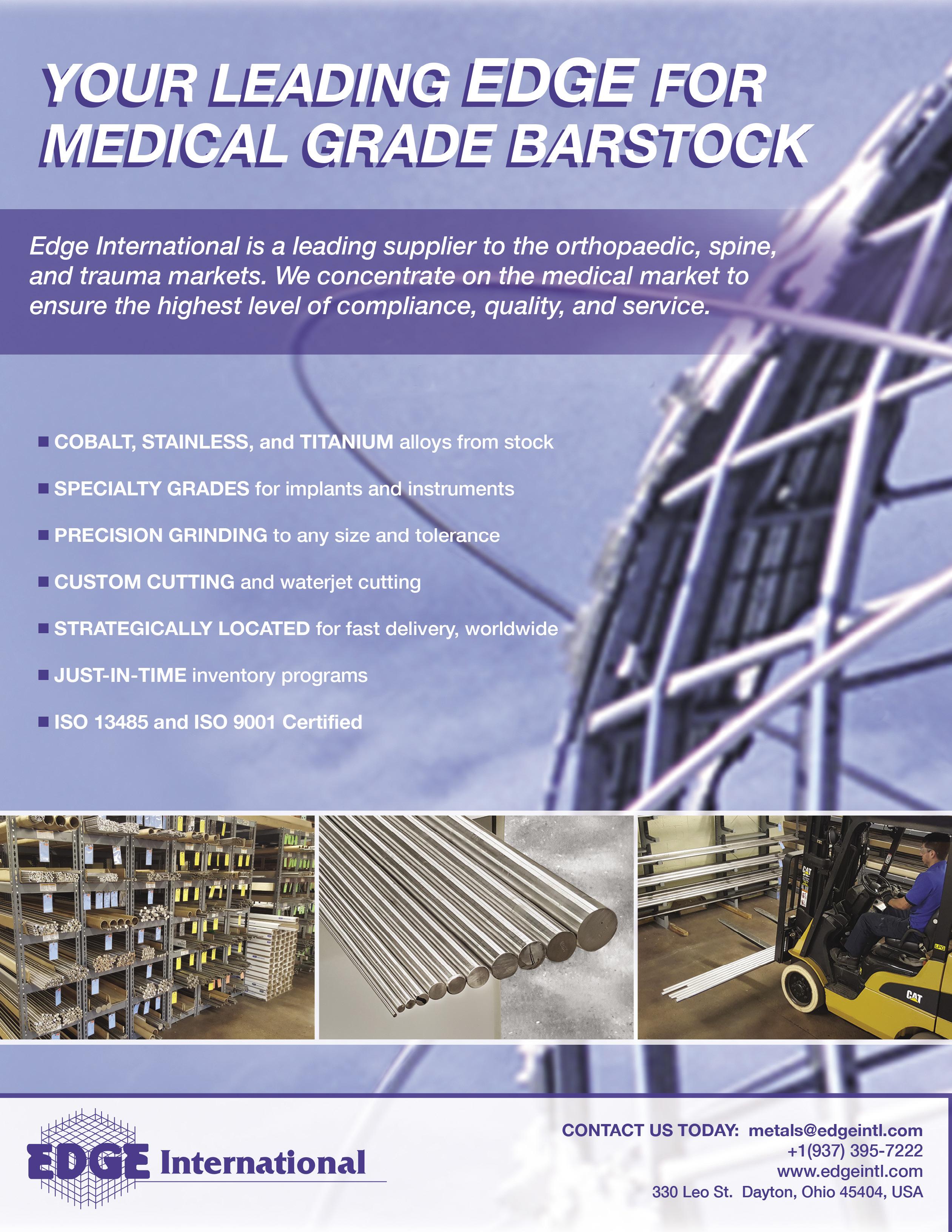
South Korea, India and Indonesia.” Reuters wrote that the F414 engine will be used to power its Tejas Mark 2 light combat aircraft. “Tejas Mark 2, still under development, is a more powerful jet and needs a bigger engine. HAL has procured eight F414 engines for this program. The F414 will also be used to develop India’s next generation Advanced Medium Combat Aircraft.”
Reuters also pointed out that fullscale production of the F414 in India isn’t slated to begin until 2030. For the titanium industry, the potential production of titanium engine parts in India holds the key to interest in the program, as it will define what
and GE Aerospace continues to work with the U.S. government to receive the necessary export authorization for this.”

The press release stated that GE Aerospace “has operated in India for more than four decades with wide engagement in the industry including engines, avionics, services, engineering, manufacturing, and local sourcing. In addition to potential new work in India, a number of U.S. facilities that currently support work on the F414 engine will see additional volume as a result of today’s announcement. To date, more than 1,600 F414 engines have been delivered globally.”
GE Aerospace “has operated in India for more than four decades with wide engagement in the industry including engines, avionics, services, engineering, manufacturing, and local sourcing. In addition to potential new work in India, a number of U.S. facilities that currently support work on the F414 engine will see additional volume as a result of today’s announcement. To date, more than 1,600 F414 engines have been delivered globally.”
type of machine tools, material handling equipment, IT design technology and metal alloys will be used to manufacture the engine.
For its part, GE issued a press release, dated June 22, on its website (https://www.ge.com/news/pressreleases/ge-aerospace-signs-mouwith-hindustan-aeronautics-limitedto-produce-fighter-jet-0), confirming it signed a memorandum of understanding with HAL “to produce fighter jet engines for the Indian Air Force. The agreement includes the potential joint production of GE Aerospace’s F414 engines in India,
Bookings for Boeing, Airbus Jets

Earlier this year, The New York Times reported Air India, owned by the Tata Group, ordered 470 commercial jets from Boeing and Airbus, “in a sign of the scale of the post-pandemic rebound in the aviation industry and the growing market in India.” This booking reflects an overall upswing in the global aerospace market as it continues to recover from the devastating pandemic years (see more information below).The report, dated Feb. 15, indicated that Air India would buy 220 jets from Boeing and
250 from Airbus, in a deal estimated at more than $100 billion, and would include single-aisle and wide-body planes. That deal is expected to be a boost to North American titanium companies.

The purchase of the jets indirectly reveals the growing strength of the Indian economy as well as the rising fortunes of that country’s middle class and the demand for business and vacation travel. “The airline business is booming in India, with the government planning to build 80 new airports over the next five years. The new planes will be used to expand Air India’s footprint and add more longdistance routes.”
India’s Titanium Sponge Production
As for the evolution of its titanium industry, India produces an estimated India produces 500-1,000 metric tons of sponge at its Kerala Minerals and Metals Ltd (KMML), in the Chavara, Kollam district of Kerala. This level, to be sure, is a relatively small amount of production capacity in terms of global standards. By contrast China has over 180,000 metric tons of sponge capacity, followed by Russia
52 TITANIUM TODAY
India Gains Momentum In Global Aerospace, Titanium Industries (continued)
Butech Bliss delivers excellence in melting equipment repairs

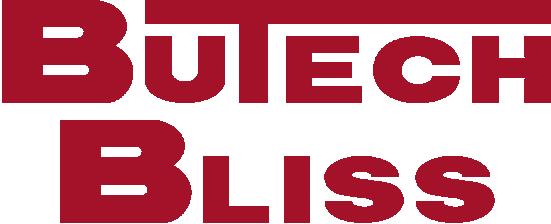
That’s why when it comes to the design and manufacture or the repair and reconditioning of crucibles, molds, and hearths for your ESR, VAR, EBM, or PAM installations, we draw on our more than 130 years of design, engineering and manufacturing excellence to ensure that your copper-based melting equipment is operating at peak efficiency.

A reputation for quality work and on-time delivery.
Our staff of expert millwrights, welders and machinists can tear down, assess, repair and test your valuable melting equipment. Additionally, our manufacturing capabilities are fully supported by our staff of over 50+ engineers. Our services include:
• Machining, welding, straightening, and sizing of stainless steel, copper, nickel, aluminum, bronze, and carbon steel


• Preventative maintenance, including cleaning, re-sizing, straightening and seal replacement
• Crucible diameter and size modifications

• New crucibles, molds, base assemblies, water jackets, etc.
To learn more about our rebuilding and manufacturing services,call (330) 337-0000, visit www.ButechBliss.com or email cu@butech.com.
We Build Things. Better. 550 South Ellsworth Avenue, Salem, OH
(68,000 metric tons) and Japan (46,500 metric tons), according to the website Statista (www.statista.com).
India Forbes, several years ago, wrote that India “has joined an exclusive club with the knowhow to process titanium sponge, a key material in space and defense applications. Five hundred tons may sound like a small amount (in a market dominated by China). The KMML plant not only helps India get parity in strategic affairs, but also opens the door for regional influence.” In addition, India’s domestic sponge production, even though it’s a modest amount, helps to support the country’s expanding aerospace sector, partially shielding it from global price fluctuations. How much and how soon the KMML sponge production
capacity expands remains to be seen. The report stated that India mines titanium ore from the beaches of its long coast line, and that the country’s Defense Metallurgical Research Laboratory developed the technology for producing sponge. “The job of converting titanium sponge to titanium alloy will be done by the Hyderabad-based Mishra Dhatu Nigam.”
Dr. MP Sukumaran Nair FIE, the chairman of KMML, in a presentation (“Titanium Sector India Growth Plans”) at TITANIUM ASIA 2018, held in Singapore, presaged India’s growing engagement with the titanium industry. Nair identified the KMML sponge production as an important titanium activity under the government of Kerala. Nair said KMML proposed a “titanium industrial complex
downstream products from titanium sponge by melting and, forging, with the induction of vacuum arc remelting furnaces.” He didn’t provide details or a time frame for this industrial complex, and no online news articles were found regarding the status of this proposed complex.
Visiting the Moon
CNN.com reported that India’s Chandrayaan-3 entered lunar orbit during the first weekend of August. The Aug. 7 report indicated that the spacecraft, which blasted off on July 14, landed on the moon on Aug. 23. Reuters, in an online report, said India is only the fourth nation to successfully land on the moon, following missions by the United States, China, and Russia (the former Soviet Union). Developed by the Indian Space Research Organization (ISRO), Chandrayaan-3 is comprised of a lander, propulsion module and rover. It’s believed that the spacecraft made use of titanium components—most likely titanium from India. Its aim is to safely land near the challenging terrain of the moon’s South Pole, collect data and conduct a series of scientific experiments to learn more about the moon’s composition and the possible existence of ice and water. This was India’s second attempt at a soft landing, after its previous effort failed with the Chandrayaan-2 in 2019. Its first lunar probe, the Chandrayaan-1, orbited the moon and was then deliberately crash-landed onto the lunar surface in 2008, according to the CNN report.

Speaking of outer space, the website Universe Today (www. universetoday.com) and the New

54 TITANIUM TODAY
India Gains Momentum In Global Aerospace, Titanium Industries (continued)
The Moon, public domain photo by NASA’s Galileo spacecraft
York Times, in July, reported that astronomers discovered an exceptionally bright gaseous “exoplanet” named LTT 9779 b, about the size of the planet Neptune, located 265 light years from earth, which has a cloudy atmosphere composed of “titanium-laced silicates.” The titanium clouds act like a mirror, reflecting light from neighboring stars.
The online journal Astronomy and Astrophysics first described the possibility of titanium clouds on LTT 9779 b in a technical paper (https:// www.aanda.org/articles/aa/full_ html/2023/07/aa46117-23/aa46117-23. html). “The temperature of LTT 9779 b is high. In order to study the extreme cases, we decided to consider titanium-based condensates, which are the most refractory condensates that can form in hot exoplanets together with silicate clouds, which have often been considered in previous studies.”
Airlines Continue to Gain Altitude
As mentioned above, India’s huge order for Airbus and Boeing jets is another sign of improving business conditions in the global aerospace market—welcomed, encouraging news for the titanium market. Commercial aerospace (engine components, structural systems) remains a premier showcase business sector for the titanium industry. The International Air Transport Association (IATA) the Montreal-based trade association for the world’s airlines, representing some 300 airlines or 83 percent of total air traffic, recently filed an
online press statement, “Airline Profitability Outlook Strengthens” (https://www.iata.org/en/ pressroom/2023-releases/2023-0605-01/#:~:text=Revenue%3A%20 Industry%20revenues%20are%20 expected,%2D10%25%20on%202019).

The IATA reported an expected strengthening of airline industry profitability in an upgrade of its outlook for 2023. Highlights include: Airline industry net profits are expected to reach $9.8 billion in 2023 (1.2-percent net profit margin) which is more than double the previous forecast of $4.7 billion (December 2022); Airline industry operating profits are expected to reach $22.4 billion in 2023, much improved over the December forecast of a $3.2 billion operating profit. It is also more than double the $10.1 billion operating profit estimated for 2022.
According to the IATA, about 4.35 billion people are expected to travel in 2023, which is closing in on the 4.54 billion who flew in 2019. Cargo volumes are expected to be 57.8 million tons, which has slipped below the 61.5 million tons carried in 2019 with a sharp slowing of international trade volumes.
Total revenues are expected to grow 9.7 percent, year over year, to $803 billion. This is the first time that industry revenues will top the $800-billion mark since 2019 ($838 billion). Expense growth is expected to be contained to an 8.1-pecent annual increase.
Willie Walsh, IATA’s director general, quoted in the outlook statement, said “airline financial performance in 2023 is beating
expectations. Stronger profitability is supported by several positive developments. China lifted COVID-19 restrictions earlier in the year than anticipated. Cargo revenues remain above pre-pandemic levels even though volumes have not. And, on the cost side, there is some relief. Jet fuel prices, although still high, have moderated over the first half of the year,”
“The return to net profitability, even with a 1.2-percent net profit margin, is a major achievement,” Walsh continued. “First, it was achieved at a time of significant economic uncertainties. And second, it follows the deepest losses in aviation’s history ($183.3 billion of net losses for 2020-2022 (inclusive) for an average net profit margin of -11.3 percent over that period). It should be noted that the airline industry entered the COVID-19 crisis at the end of a historic profit streak that saw an average net profit margin of 4.2 percent for the 2015-2019 period.”
Walsh pointed out that postpandemic economic uncertainties “have not dampened the desire to travel, even as ticket prices absorbed elevated fuel costs. After deep COVID-19 losses, even a net profit margin of 1.2 percent is something to celebrate. Resilience is the story of the day and there are many good reasons for optimism.” n
TITANIUM TODAY 55
India Gains Momentum In Global Aerospace, Titanium Industries (continued)
COMMERCIAL LEADERSHIP

September 22, 2023

Please see the following changes for the Commercial Operations group.

Irv Brown is transitioning to the role of Director, acting as a strategic advisor to the Commercial and Executive groups. His responsibilities and functions will begin to transition from managing the day-today commercial operations.
George Farrell has been promoted to the position of Director of Commercial Operations. In this role, George will be responsible for the planning and procurement of raw materials, sales, shipping, marketing, and customer service of the organization. George has served in several capacities within our operations department since 2000. Most recently, George was the Director of Operations for Titanium Finishing.
These changes are effective immediately and are the beginning of an exciting process as we position the company for continued growth and success well into the future.
SOLAR ATMOSPHERES OF MICHIGAN’S RELOCATION CHARGES FORWARD
Chesterfield, MI, August 22, 2023 – Solar Atmospheres of Michigan Inc., formerly known as Vac-Met Inc., has successfully reached its first milestone in the relocation phase. Solar invested over $5 million of new equipment installed with all new utilities. The new equipment includes two vacuum furnaces, an air tempering furnace, and a freezer. As a result, Solar was able to host their first AS9100D audit at the new facility in Chesterfield Michigan. This quality management system audit for aviation, space and defense organizations which incorporates ISO9001 standards passed with zero findings.
After purchasing the company one year ago, the goal was to build a new facility with no impact on the existing customer base. Bob Hill President of Solar Atmospheres of Michigan states, “We wanted to keep the 42-yearold Vac-Met business fully operational during our relocation phase. Therefore, to bring both business units under one roof, we needed to configure a new “mini business” to satisfy AS and Nadcap requirements. Today, we can begin running commercial work only in Chesterfield. After
our upcoming Nadcap audit, we will start processing aerospace work. Following that milestone, we will begin to relocate nine (9) existing vacuum furnaces from our Warren and Fraser Michigan plants to the new facility. Chesterfield will be able to scale with our customers and expand the business well into the future!”
For more information about the Solar Atmospheres Michigan facility contact Chris Molencupp at (586) 264-8100 ext. 1620, or chrism@solaratm.com, and visit us at www.solaratm.com.


56 TITANIUM TODAY
From the Wire
BAHCO TAKES INNOVATION TO THE NEXT LEVEL WITH LAUNCH OF THE WORLD’S FIRST TRIMETAL BANDSAW BLADE – THE 3859 EASY-CUT XTREME TRIMETAL BLADE
Kenosha, Wis., November 10, 2022 – Bahco is expanding its bandsaw blade portfolio with the debut of the world’s first trimetal bandsaw blade. The Bahco 3859 Easy-Cut Xtreme Trimetal Bandsaw Blade offers users an easier, wider-ranging and faster cut with a longer-lasting blade life.
Bahco is a world leader in the bandsaw market with more than 140 years of experience manufacturing saw blades and cutting tools. The company is renowned for its research and innovation efforts that ensure they stay ahead of the curve, which lead to the development of its new trimetal carbide bandsaw blade.
The 3859 can cut a much wider array of materials, including structural and mild steels, stainless steels, cast iron, high temperature alloys and tool steels. Its unique set pattern provides a greater range of cutting widths, bringing greater application potential and increased productivity.
GRANDIS TITANIUM IS PLEASED TO ANNOUNCE NEW ADDITION TO OUR SALES TEAM.
Our new Sales Associate Mr.Matt Wajrak worked at Grandis since 2018 in other positions, and now will work in Sales Department to foster stronger relationship with our existing clients and to bring new customers domestically and internationally, both aerospace and commercial.
In addition to his experience in the industry, Mr.Wajrak speaks German, Italian and Polish languages and he looks forward to better serve manufacturers of titanium products in European markets.
The 3859 Easy-Cut Xtreme Trimetal Bandsaw Blade cuts “easy to cut” materials and difficult materials with the same blade; there is no need to change blades. This saves time and money by reducing blade inventory, operator labor and machine downtime. The 3859 also boasts a much longer blade life than bimetal blades. Its enhanced durability also means the blade can cut faster when needed.
Because the trimetal blade uses the same parameters as bimetal blades, there is no need to break in the blade. The 3859 comes direct from our factory already honed with a patented edge preparation. This is our best multiapplication out-of-the-box bandsaw blade yet!
For more information on the new 3859 Easy-Cut Xtreme Trimetal Bandsaw Blade from Bahco, visit www.bahco.com.

NU-TECH IS NOW PART OF RELIANCE STEEL AND ALUMINUM

You know Nu-Tech Precision Metals as an extruder of seamless pipe, tube, bar and near net shapes from specialty metals including all grades of titanium, zirconium and more. What you may not have heard is that Nu-Tech is now part of the family of companies owned by Reliance Steel and Aluminum, the world’s largest metal supplier and distributor. This means NuTech is now able to leverage its expertise in materials engineering and quality control to provide access to the world’s largest store of raw materials with over 100,000 different metal grades and forms. We are ready to assist you with your metal challenges. Nu-Tech still specializes in your custom extrusion needs whether they are small development or R & D runs to mill quantities.

TITANIUM TODAY 57 From the Wire (continued)
NSL ANALYTICAL PROVIDES TESTING SERVICES TO THE TITANIUM INDUSTRY

In business since 1945, NSL is an ISO/IEC 17025 and Nadcap certified Independent Testing Laboratory providing reliable and cost-effective materials testing to customers throughout the United States and around the world. We also accept projects subject to ITAR and EAR regulations.
NSL supports the titanium industry in several major efforts:

• Materials chemistry analysis
• Part testing and characterization
• Additive manufacturing industrialization
In the area of materials chemistry analysis, we provide services from mass spectroscopy, ICP, Leco, XRF, and XRD testing on a range of materials from titanium sponge and ore through to bulk lot analysis for quality assurance in full rate production.
For part testing and characterization, we operate a fully capable metallurgical laboratory with services including metallography, SEM with remote login capability, tensile
and charpy testing, and elevated temperature testing capabilities. An exciting area for growth in Titanium is metal additive manufacturing. NSL is supporting this with a powder analysis laboratory for techniques such as metal powder bed fusion or directed energy deposition. We are also active participants in several cooperative consortia programs and are open to joining and supporting more initiatives for growth in this area with our unique expertise in end-to-end chemistry to metallurgical analysis of titanium and its alloys.
For more information, please stop by our booth at the Titanium USA 2023 conference (#610) or contact us at: gsich@nslanalytical.com
PRECISION ABRASIVES ENSURES UNINTERRUPTED SUPPLY CHAIN AND EXCEPTIONAL CUSTOMER SUPPORT
Zelienople, PA, October 1, 2023 – Precision Abrasives is the leading distributor of abrasives in the primary metals market, proudly serving the Titanium market for over 30 years. Precision Abrasives continues to provide the most durable supply chain in the country, leveraging strong relationships with key abrasive manufacturers to provide solutions.
Under severe market conditions, Precision Abrasives market understanding and acquired knowledge of the shifting Titanium market, proactively secured the essential abrasive resources to meet the industry’s rapidly growing requirements. Precision Abrasives foresight permitted uninterrupted service and kept its customers running smoothly. Through its unparalleled inventory and sourcing, Precision Abrasives has demonstrated resilience and reliability, ensuring customers can rely on a consistent supply of quality abrasive products.
Furthermore, Precision Abrasives continues its proud
tradition of providing unmatched technical assistance to customers in all areas of grinding and polishing. With a team of experts, the company not only offers guidance, support, and expertise to help clients optimize their abrasive processes but also delivers tailored problem-solving solutions.
Ron Divers, VP of Operations articulated the company’s dedication to its customers “We understand the vital role our products and team play in the primary metals market. Our commitment to being our customers most dependable partner is what sets us apart.”
Lou Divers, President “Customers trust the team we’ve built.”
For inquiries or more information about Precision Abrasives, please visit our website at www. precisionabrasives.net or contact George Isaac at 412-4030141 or george@precisionabrasives.net
58 TITANIUM TODAY From the Wire (continued)
PRESIDENT TITANIUM IS PROUD TO ANNOUNCE 50 YEARS IN BUSINESS!
We want to thank everyone who has contributed to our success and look forward to continuing the growth of our company. President Titanium is also proud to announce the opening of our new, 20,000 square foot warehouse, bringing our total footprint to 60,000 square feet. This new addition is a testament to our continued growth and success. Staying on top as the leader in distribution of USA malted and manufactured titanium products in the country takes years of knowledge, experience, and superior relationships. When you Think Titanium, think President Titanium!
TIFAST HAS PRODUCED +90% RECYCLED TITANIUM BARS TI6AL4V.
Titanium bars TI6AL4V from diameter 7 to 65 mm comply with the Aerospace specification AMS 4928 and the Medical one ISO 5832-3.
TiFast is certified ISO14001 for environmental, installed photo voltaic panels on its roof and does not use gas or petrol during the production, in order to reduce CO2 emissions. Furthermore, thanks to the +90% recycled bars TiFast has made another step forward for a green titanium.
www.tifast.com
VANADIUM INDUSTRY VETERAN VINCENT ROCCO JOINS US VANADIUM
HOT SPRINGS, AR – (Sept. 26, 2023) – US Vanadium (“USV” or the “Company”) is pleased to announce that Vincent Rocco has joined the company as Vice President of Sales and Marketing.

Mr. Rocco has worked in the vanadium and strategic metals industries for more than 30 years. Prior to joining US Vanadium, he served as Vice President of Sales and Marketing at AMG Titanium Alloys and Coatings of New Castle, Penn., where he was responsible for annual sales of more than $30 million. Previously, he served in various senior positions with these companies: VSMPO Tirus US; Ametek Reading Alloys; ASKO Inc.; Evraz Stratcor, Inc.; SKF USA; SMS Comcast; and Orbital Sciences Corp.
Mr. Rocco received his M.B.A. from the University of Pittsburgh and his B.S. from the Pennsylvania State University.
“We are very pleased to welcome such a highly experienced industry veteran as Vince to the US

Vanadium team,” said Mark A. Smith, Chairman of US Vanadium. “Vince is a well-known and highly respected leader in the vanadium and related specialty metal sectors, and we look forward to having him on our team as our U.S. facilities continue to ramp up production of high-purity vanadium oxide and vanadium-based specialty chemicals.”
More information on U.S. Vanadium, and vanadium technologies in general, can be seen on U.S. Vanadium’s website: https://www.usvanadium.com.


TITANIUM TODAY 59 From the Wire (continued)
PRECISION GRINDING MACHINE IMPROVES EFFICIENCY
The arrival of an 81 series wide belt precision grinding machine at metal polishing and finishing specialist Van Geenen has had an immediate impact. Through improved capacity, productivity and overall capability the Dutch company is opening up new business opportunities.
From those early days the company began to specialize, particularly on stainless steel and other exotic materials like titanium, aluminium and Invar. The emphasis is firmly on producing sheet and tube material to the highest quality in terms of surface finish (right up to Mirror 8 grade), with greater efficiency and consistent technical quality of products.
Investment to boost productivity
“Hand polishing remains a critical part of our business, but automation has been central to our development since our first investment in a Grindingmaster/Timesavers back in 1984. We are always looking to improve efficiency and our investment in automation has boosted productivity,” says Managing Director, Bart van Geenen. “As such, our partnership with Timesavers continues with this major investment in the 81 series machine, an investment that driven both by the heart, with my father’s desire for manufacturing technology, and head, with me focused on the commercial potential.”
Quality
Van Geenen prides itself on the quality of its work and the strength of its relationships with customers. This combination has opened up new business opportunities for its polished sheet and tube products across markets including architectural, tanks, and food processing. “We have always had the ability to do things that our

competitors can’t do and to continue that we recognized it was time to move into precision grinding.” The scale of the 81 series will also future proof production at Van Geenen, at an overall length of 25 meters the machine has a capacity to grind sheet or plate from 0.15 mm up to 100 mm; with stock removal rates of up to 0.2 mm/pass achievable with a table size of 2.1 m by 8.5 m to an accuracy of 0.02 mm and 0.3Ra and less.
Time savings
The 81 series is already delivering significant time savings for van Geenen compared with existing processes. For example, producing a 4m long, 2m wide by 20 mm thick sheet for a customer in the food processing industry, which required a 0.8Ra surface finish. It used to take between 4-5 hours to complete. This is now achieved in one hour on the 81 series. “With the level of investment in the Timesavers 81 series our hourly rate has increased, but this is justified. Our throughput is much greater and lead times much shorter. That level of efficiency is vital when putting forward proposals to customers. We are also aware that none of our competitors in Europe have this capability,” says Bart van Geenen.
Timesavers precision grinding machine
At Timesavers, we pay attention to your needs and requirements. Therefore our precision grinding machine can be completely tailored to your wishes. The machine will be built with belt(s) and/or brush(es), according to your needs. Ancillary equipment like roller, stacking and de-stacking units, coolant filters, turnover units and conveyors or tables are offered.

60 TITANIUM TODAY From the Wire (continued)
J. LANDIS MARTIN


November 5, 1945 - September 1, 2023
James Landis “Lanny” Martin, devoted father and husband, accomplished businessman, philanthropist, and mentor to many died peacefully September 1, 2023.
Lanny served as CEO of three public companies: Titanium Metals Corporation (TIMET); NL Industries, Inc., a specialty chemical producer; and Baroid Corporation, a diversified oilfield service business. Lanny served on several public and private company boards, often as chair or lead director, and was inducted into the Colorado Business Hall of Fame in 2012. In 2006, Lanny founded Platte River Equity, named after the river on which his hometown sits, a private equity firm focused on established, lower middle market company investments. Under his leadership, the firm raised funds with committed capital of more than $1.3 billion. Among those involved in PRE’s founding were three of Lanny’s fraternity brothers, who were among many fraternity brothers that Lanny remained close to in friendship and business. For decades, Lanny frequently hosted his Phi Psi “band of brothers” at annual ski and golf retreats.
To honor Lanny’s legacy of giving and deep commitment to his community, in lieu of flowers, the Martin family encourages you to give back generously to the charitable causes that are important to you and where you can have the greatest impact. A celebration of life will be held at the Denver Art Museum at 4pm on October 20, 2023.
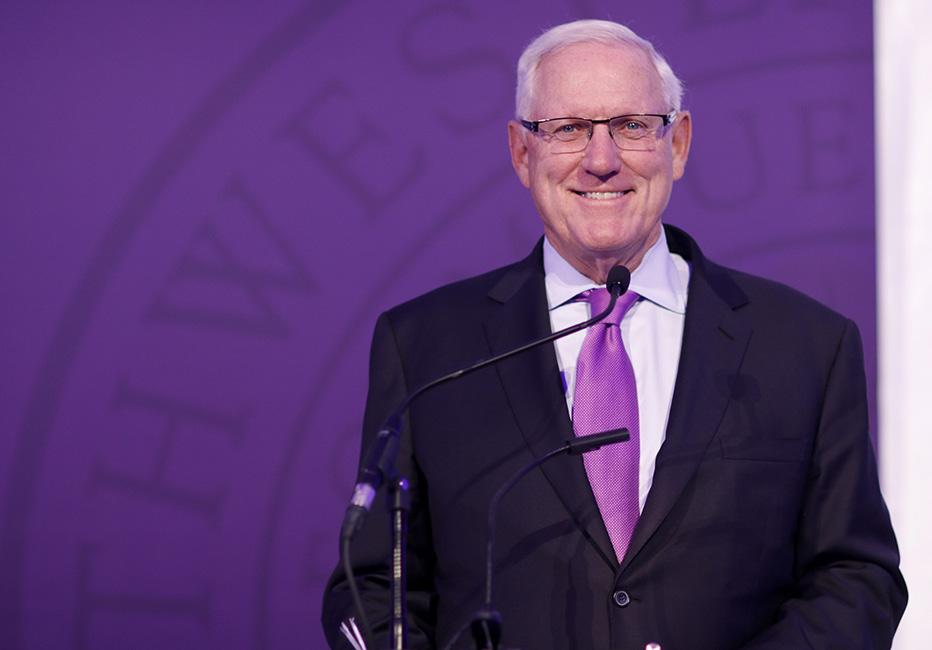
TITANIUM TODAY 61 In Memoriam
ITA Member Roster 2023
ITA Member
A. M. Castle

A. W. Bell
Accushape Inc.
ACNIS ® International
Advanced Metal Industries CO (AMIC)
Aerolloy Technologies Limited – A PTC Industries Company
ALD Vacuum Technologies, Inc
Alleima Tube AB (formerly Sandvik)
All-Met Recycling
Alta Alloys
AMC LLC
Aries Manufacturing
ATI
ATX Co.,Ltd.
Bahco
Banner Industries
Baoji Hongsen Titanium Metal Manufactory Co.,Ltd
Baoji Sino-Swiss Titanium Co.,Ltd
Baoji Special Steel Titanium Industry Co. LTD.
Baoji Titanium Industry Co., Ltd
Bodycote
Butech Bliss
Carpenter Technology Corporation

CBMM North America, Inc
Consarc Corporation
Coogee Titanium PTY LTD
CSM Tech Co., Ltd.
Dr. Markus Holz, Academic Member
Duferco SA
ELG Utica Alloys, Inc.
ITA Member
Fort Wayne Metals
FRIGGI N.A. Inc.
GfE Metalle und Materialien GmbH
Goldman Titanium
Grandis Titanium
Greystone Alloys, LLC
Hempel Special Metals AG
HETRAN-B
Horie Corporation
Howmet Aerospace
Hunan Xiangtou Goldsky Titanium Metal Co., Ltd.
ICD Alloys & Metals, LLC
Independent Forgings & Alloys Ltd
Industrial Metals International Ltd.
IperionX Limited
Jezhiang Shenji
Jiangsu Hongbao High-Precise Pipe&Tube Co., Ltd.
KASTO Inc.
Keywell Metals LLC
KineTic Engineering
Kings Mountain International (KMI)
Kymera International
Laboratory Testing Inc.
Leybold USA Inc
Lomon Billions
M3 Metals
Medart Processing Technologies
Mega Metals LLC
Metals & Alloys UK
MetCon Technologies, LLC
For complete company profiles, products and services, visit www.TitaniumResourceCenter.org
62 TITANIUM TODAY
International Titanium Association
ITA Member
Metraco, FE Mottram and Eesti Titaan oü
Mistras Group, Inc.
Monico Alloys, Inc.
Mott Corporation
MPS Technology Sp. Z o.o.
Neotiss
NobelClad
North American Alloys
NSL Analytical
Nu-Tech Precision Metals
Oerlikon Metco (Canada) Inc.
Osaka Titanium technologies CO., Ltd.
Paris Saint-Denis Aero
Perryman Company
Plaxys Inc.
Plymouth Engineered Shapes
Precision Abrasives
President Titanium Co., Inc.
Product Evaluations Systems, Inc (PES)
Prolog Titanium Corporation Co., Ltd.
Quantum Design Inc. / Centro Metalcut
Retech Systems LLC
Rex Heat Treat
Rolled Alloys Inc
Ross Precision Manufacturing
S+D Metals / Bibus Metals
Service Steel Aerospace
SES, LLC
Shaanxi Lasting Titanium Industry Co. Ltd
Shaanxi Tian Cheng Aerospace Co., Ltd. (TCAE)

Shasta Services LLC
Solar Atmospheres
Specialty Metals Company
ITA Member
Specialty Metals Processing Company
STS Metals / TSI Titanium
Sumitomo Corporation of Americas (SCOA)
TiFast Srl
Tiger Global
Timesavers International B.V.
TIMET, Titanium Metals Corporation
TITAN Metal Fabricators, Inc.
Titanium Consulting & Trading S.r.l.
Titanium Engineering
Titanium Fabrication Corporation
Titanium Finishing Company
Titanium Industries, Incorporated
Titanium International Group SRL
Titanium Processing Center
Toho Titanium America Co., Ltd.
Tricor Metals
Uhr Corp.
Ulbrich Stainless Steels & Special Metals
United Alloys & Metals Inc
United Performance Metals (UPMET)
United Technical
United Titanium
US Vanadium
Vested Metals International, LLC
VSMPO Tirus US
Westbrook Light Alloys Ltd
WST Western Superconducting Technologies Co., Ltd.
XI’AN XRUN NEW MATERIALCO.,LTD.
Xi’an Metals & Minerals Import & Export
ZHEJIANG SHENJI TITANIUM INDUSTRY CO., LTD.
Zirom
For complete company profiles, products and services, visit www.TitaniumResourceCenter.org
TITANIUM TODAY 63
ITA Member Roster 2023 (continued)



64 TITANIUM TODAY Advertiser Index Company Pg Titanium Industries, Incorporated https://titanium com/ 2 Ulbrich Stainless Steels & Special Metals https://www ulbrich com/ 5 Kymera International https://www kymerainternational com/?locale=en 7 Charles Edwards https://www charles-edwards com 9, 11 TCAE https://www tcae com/en/ 13 Medart https://www medartglobal com/ 15 United Performance Metals (UPMET) https://www upmet com/ 17 North American Alloys https://north-american-alloys webflow io/ 19 Company Pg ACNIS https://acnis-titanium com/en/ 21 TIMET, Titanium Metals Corporation https://www timet com/ 23 Perryman Company https://www perrymanco com/ 25 Solar Atmospheres https://solaratm com/ 27 Rolled Alloys Inc https://www rolledalloys com/ 29 Epoch Wires https://www epochwires com/ 31 Tricor Metals https://tricormetals com/ 33 Titanium Finishing Company https://www titaniumfinishing com/ 35 Quantum Design Inc . https://www centrometalcut com/ 37 Retech Systems LLC https://www retechsystemsllc com/ 39 Company Pg Product Evaluations Systems, Inc (PES) https://www pes-testing com/ 41 Laboratory Testing Inc https://labtesting com/ 43 ALD Vacuum Technologies, Inc https://www ald-vt com/ 45 Alpha Resources https://www alpharesources com/ 47 Aries Manufacturing www aries-manufacturing com/ 49 Banner Industries http://www supraalloys com/ 51 Butech Bliss https://www butechbliss com/ 53 Titanium Industries, Incorporated https://titanium com/ 65 International Titanium Association http://www TitaniumUSA org 66








Titanium Industries, Inc. titanium.com sales@titanium.com Please contact your local representative for an immediate quote. Toll free number: 1-888-482-6486 S P E C I A L T Y M E T A L S S U P P L Y S O L U T I O N S A E R O S P A C E | D E F E N S E | M E D I C A L | I N D U S T R I A L | O I L A N D G A S

MARK YOUR CALENDARS NOW! TITANIUM.ORG MAY 7-9 • DUBLIN, IRELAND OCT 6-9 • AUSTIN, TX • USA COMING IN




















 Martin Pike VP of Global Commercial Strategies
Martin Pike VP of Global Commercial Strategies


 Frank L. Perryman President and Chief Executive Officer Perryman Company
Frank L. Perryman President and Chief Executive Officer Perryman Company
















 By Peter Zimm
By Peter Zimm








 by Charles Edwards Principals Cliff Collier and Peter Zimm
by Charles Edwards Principals Cliff Collier and Peter Zimm
































































































































































